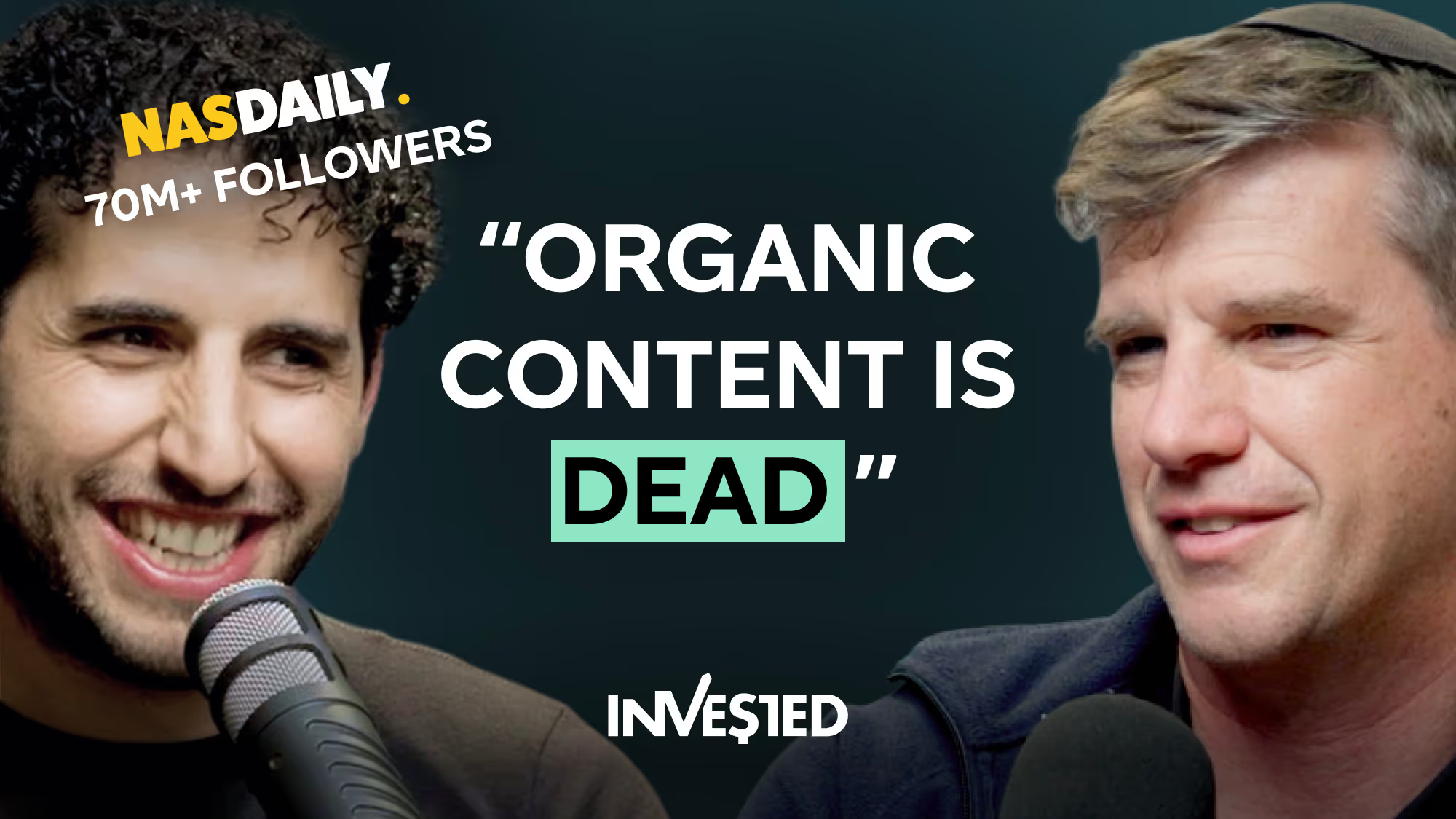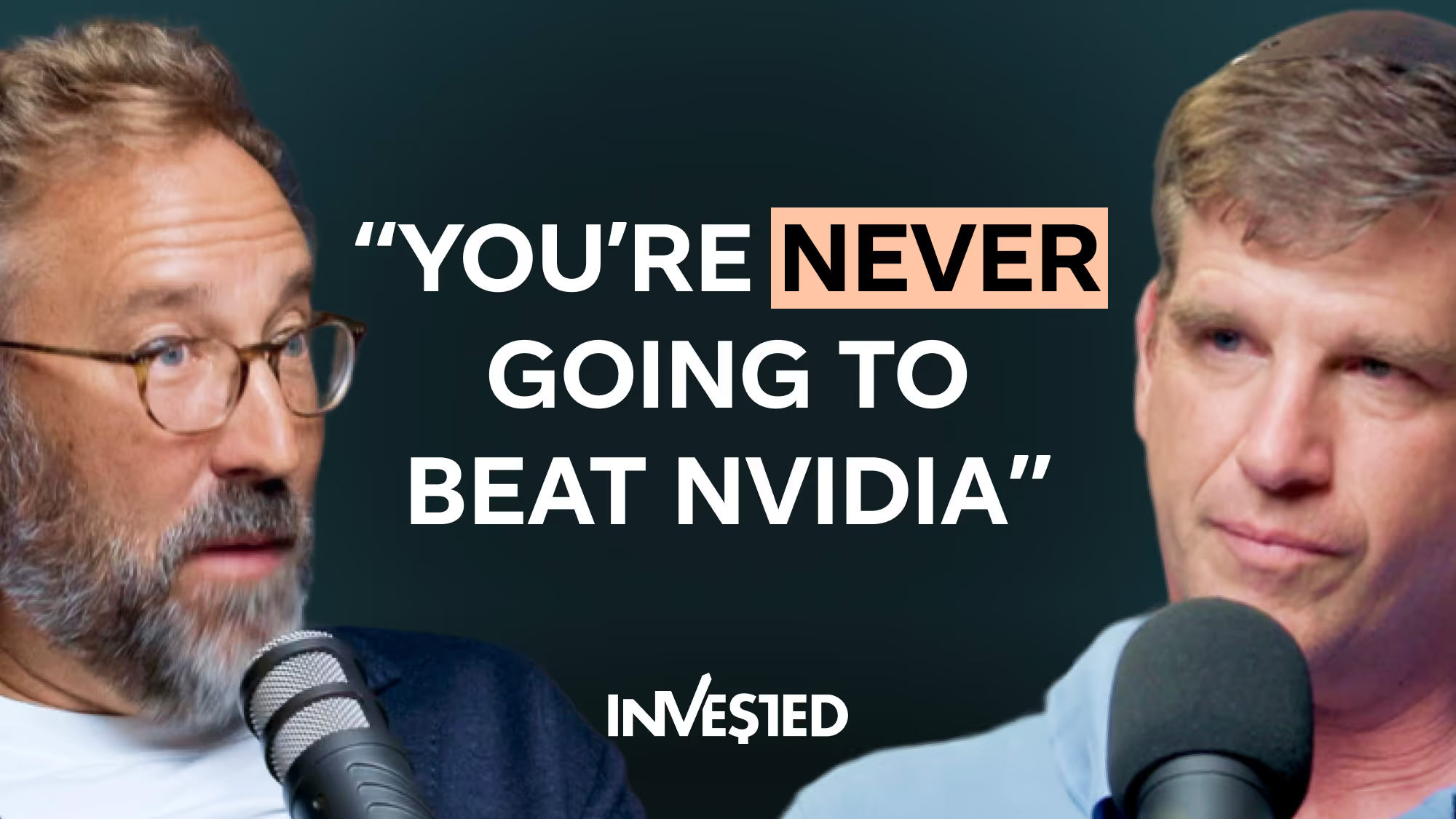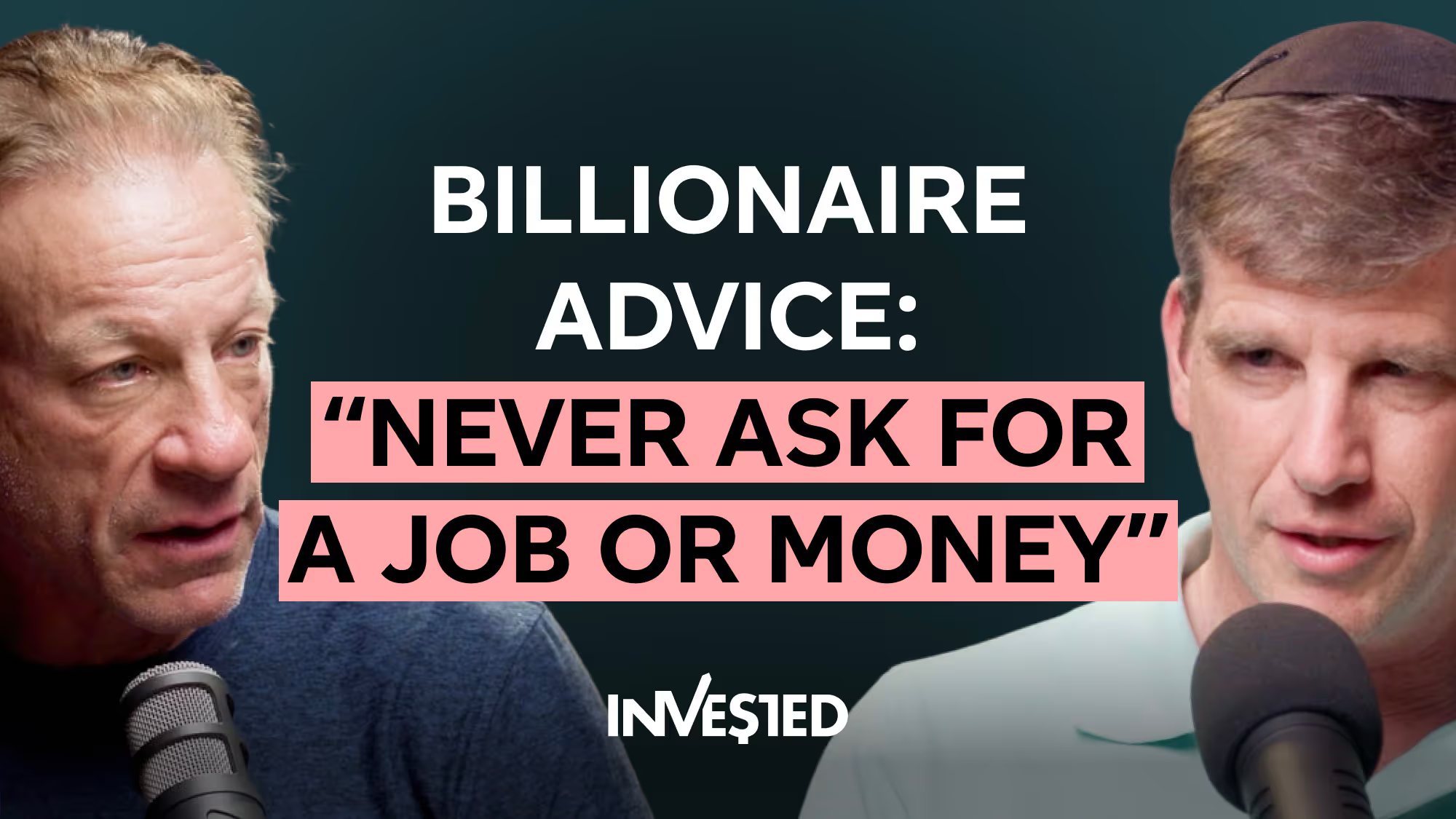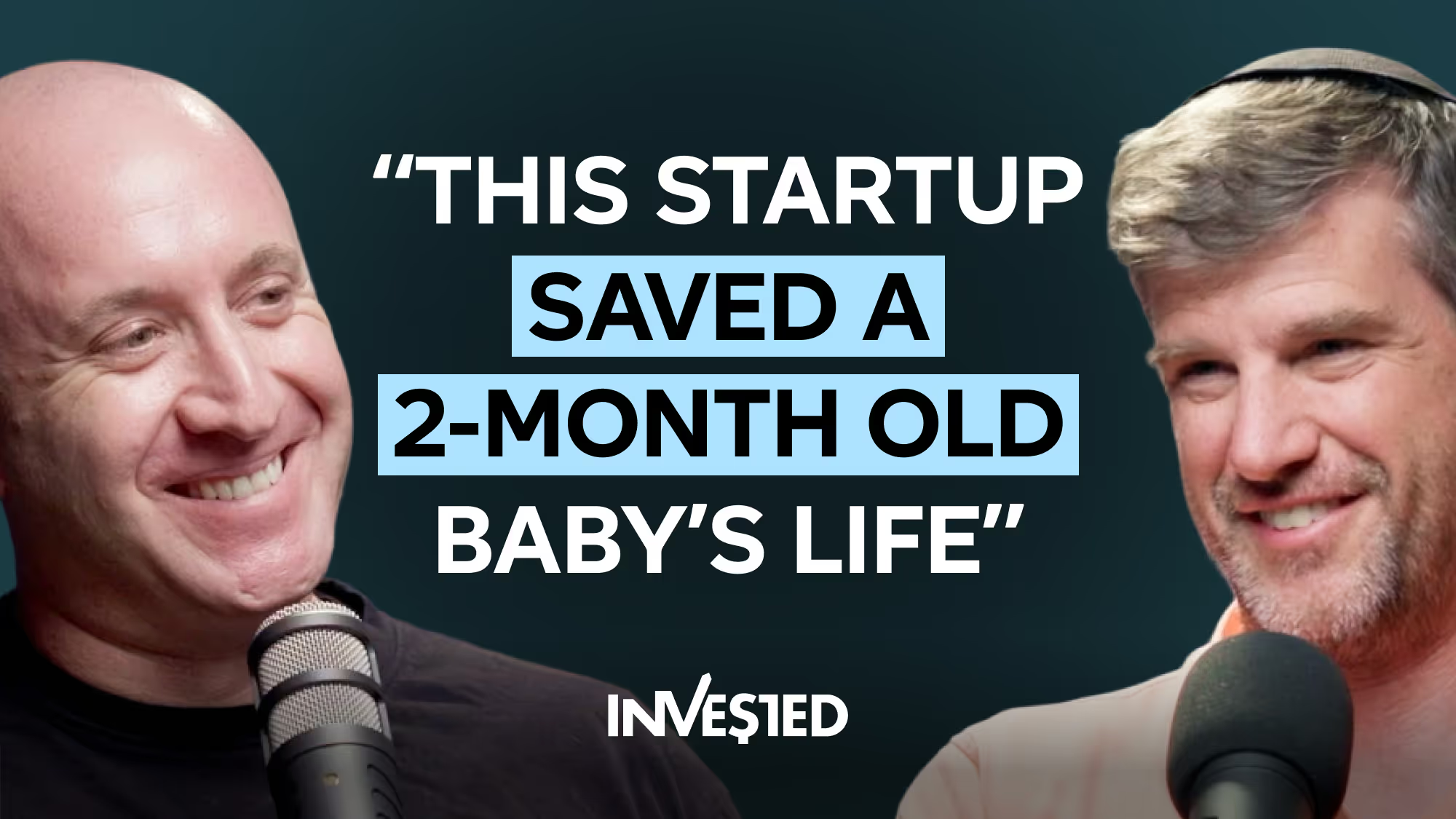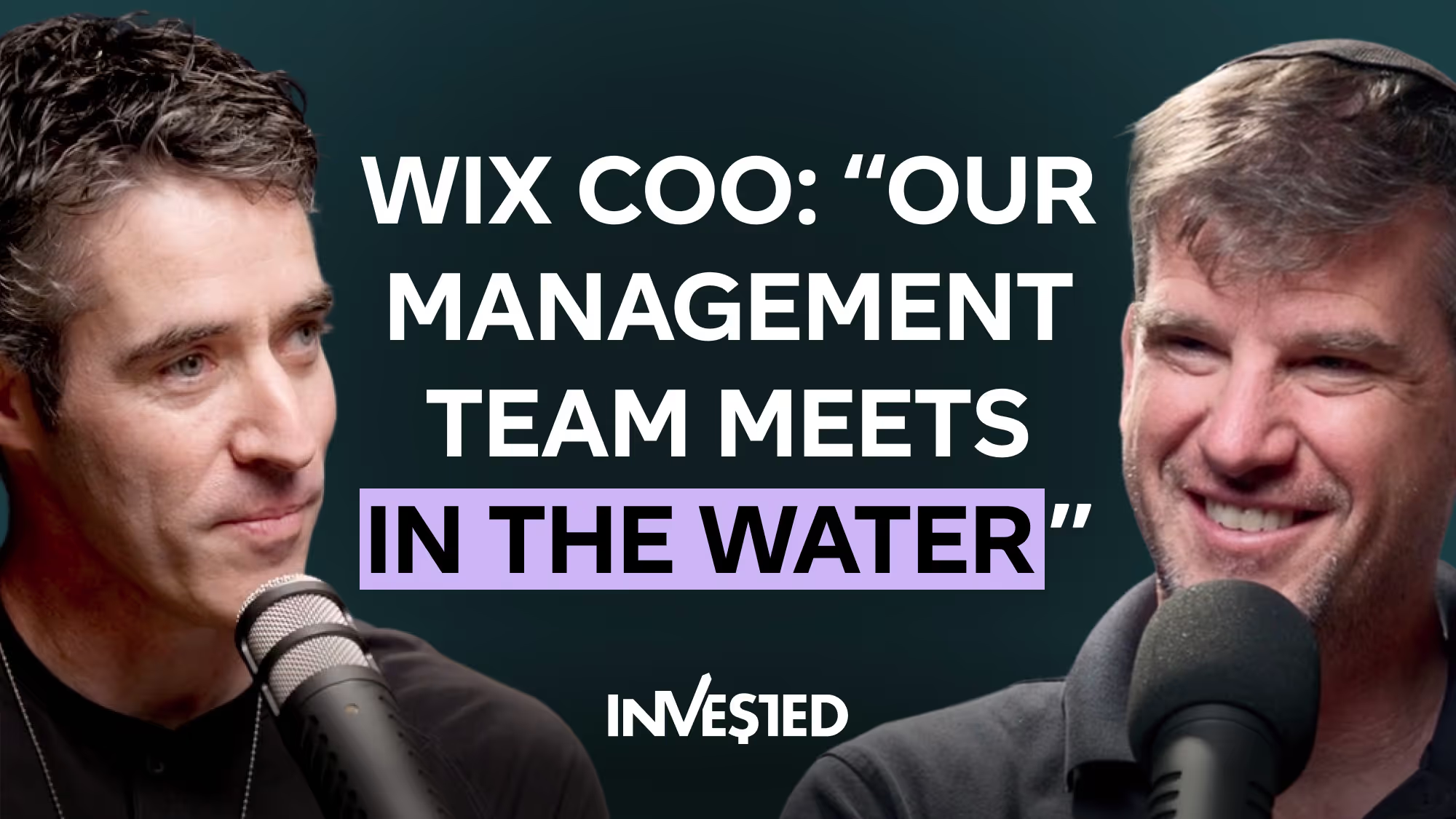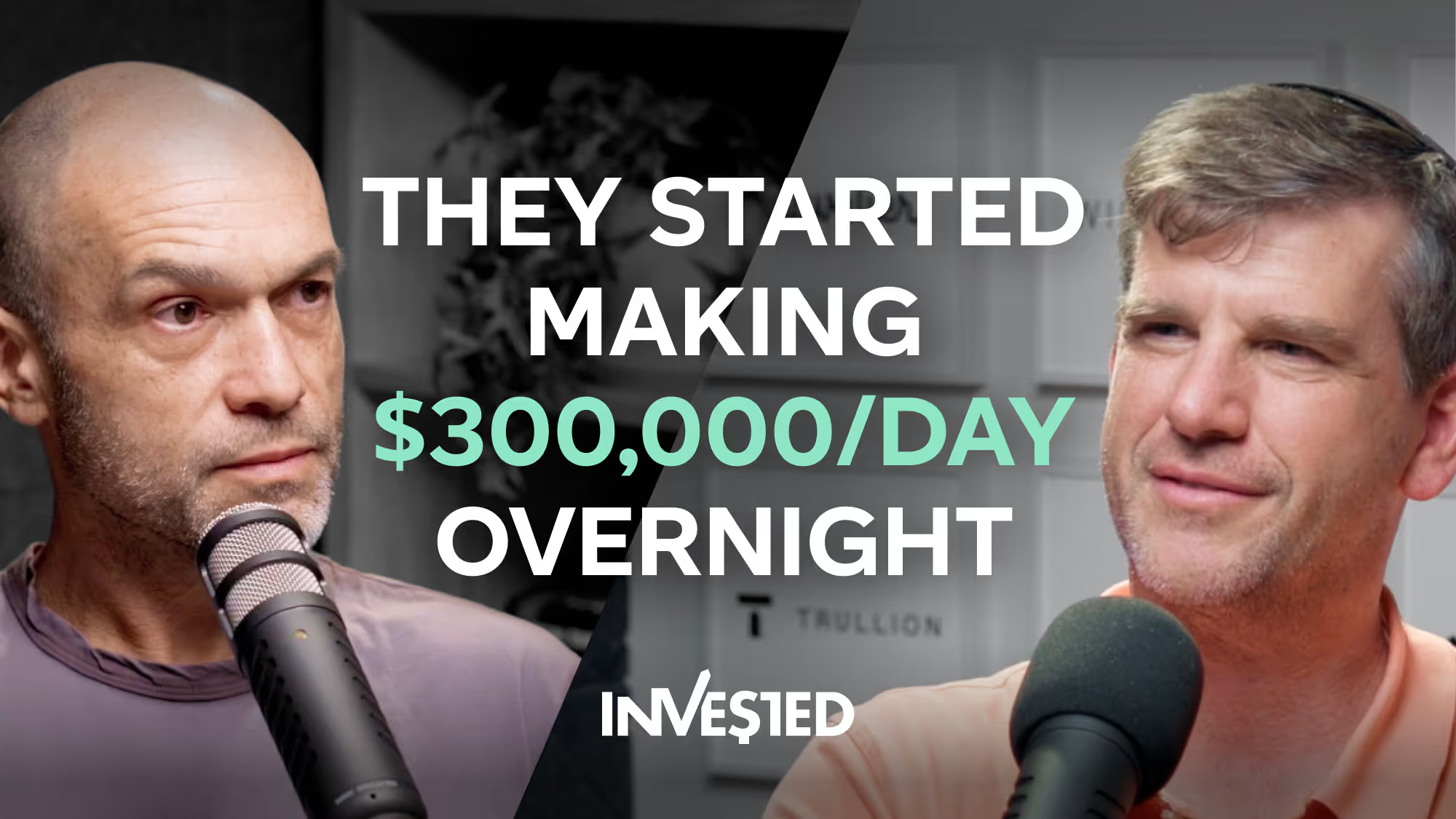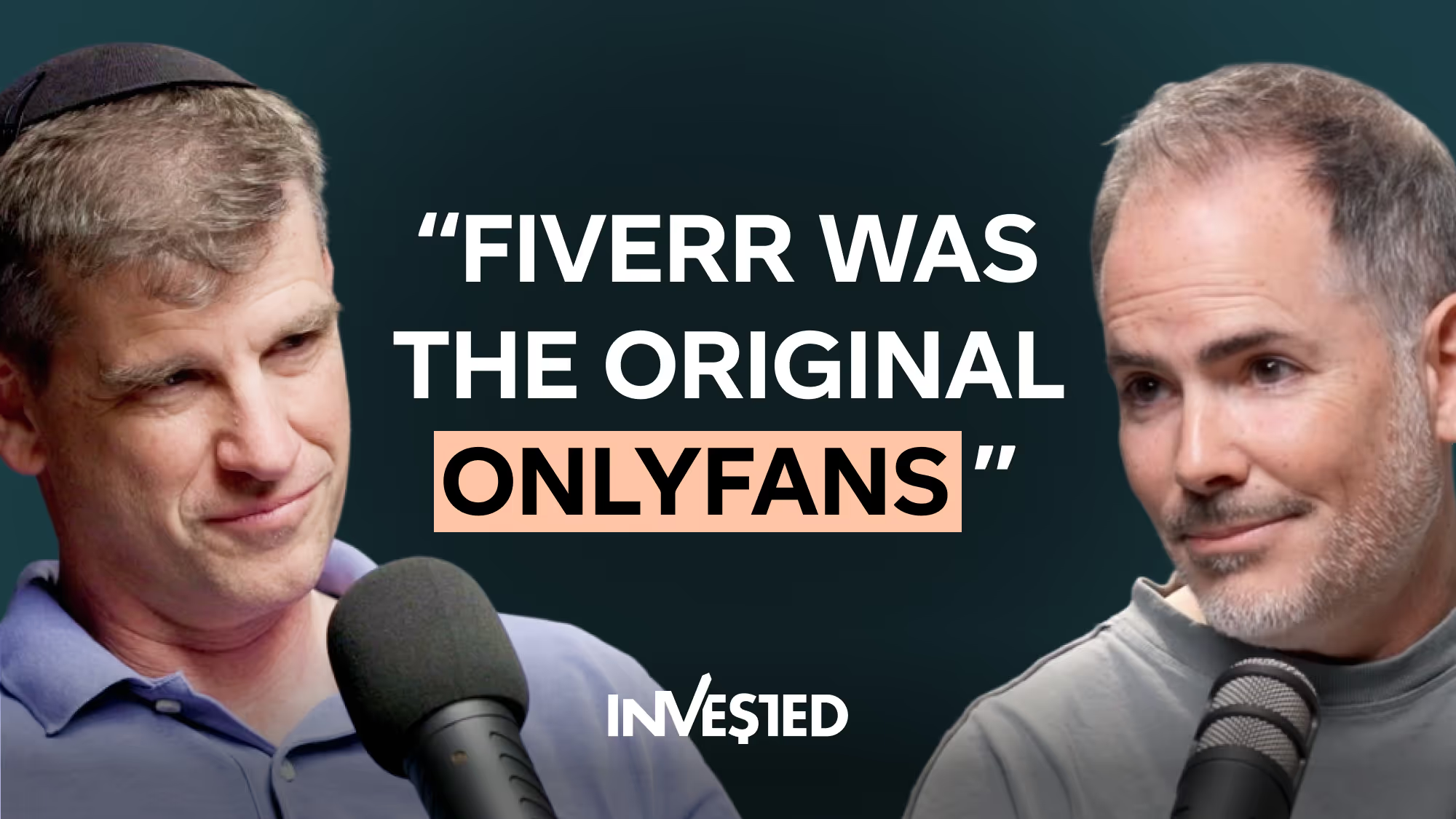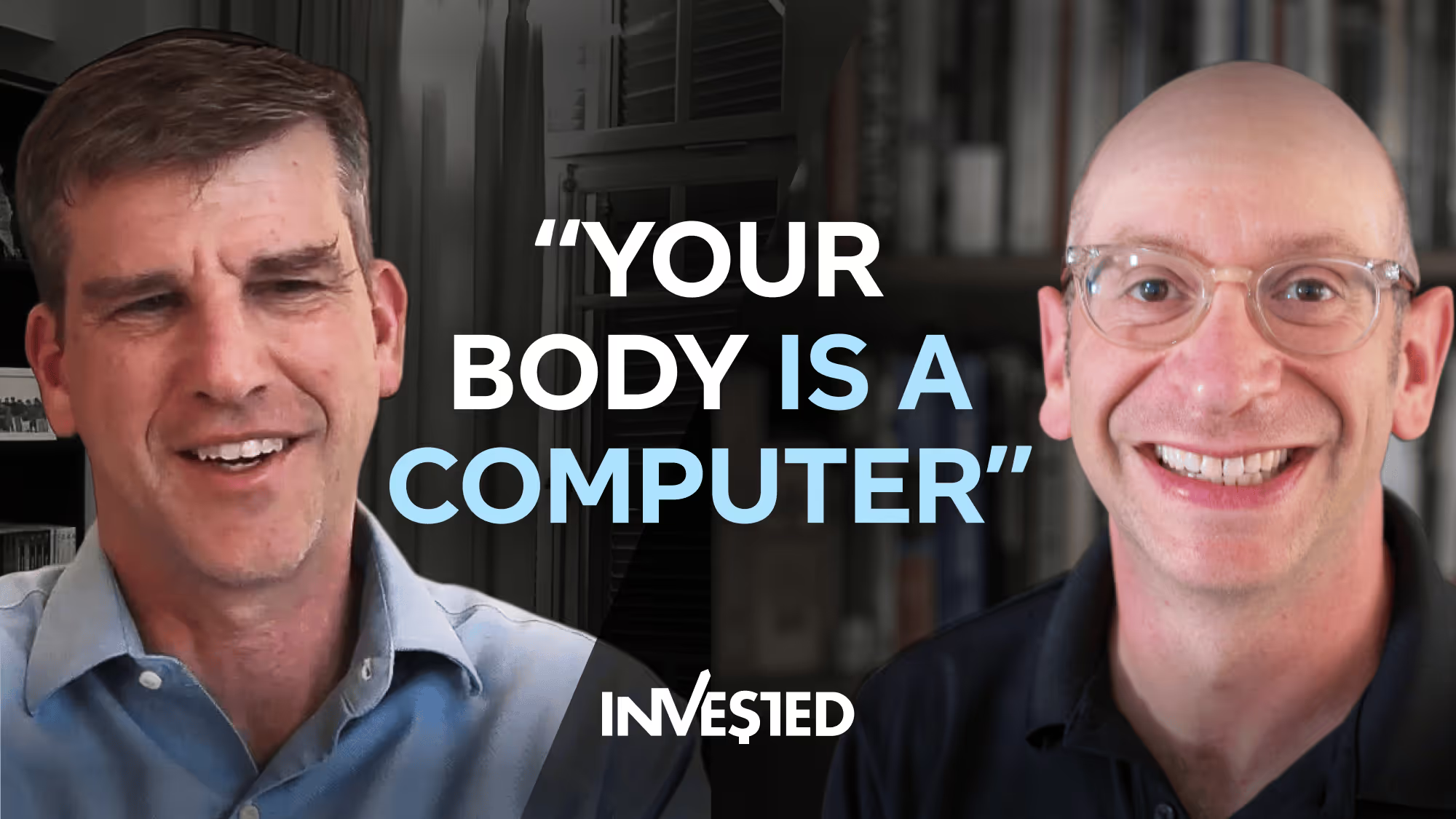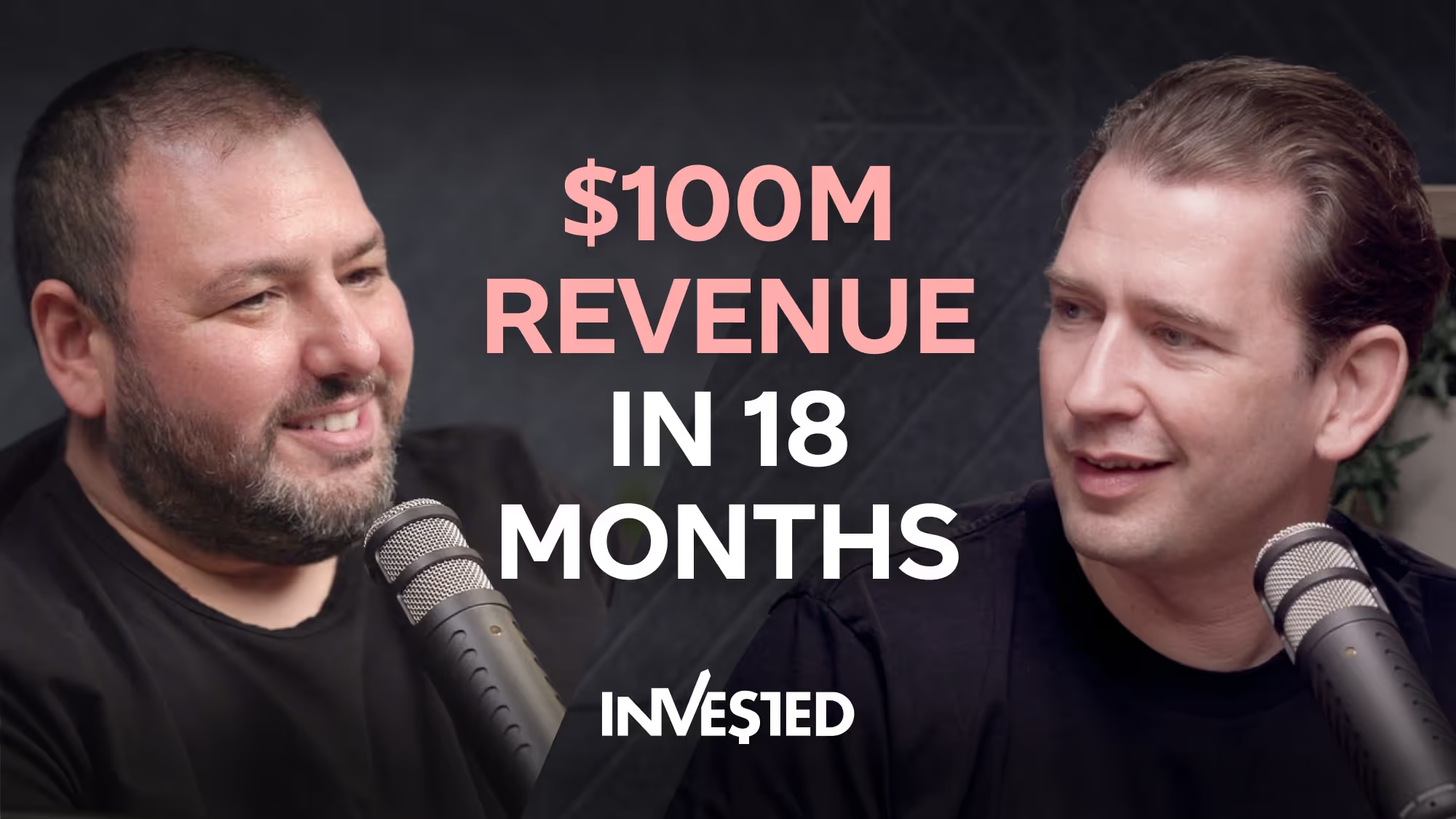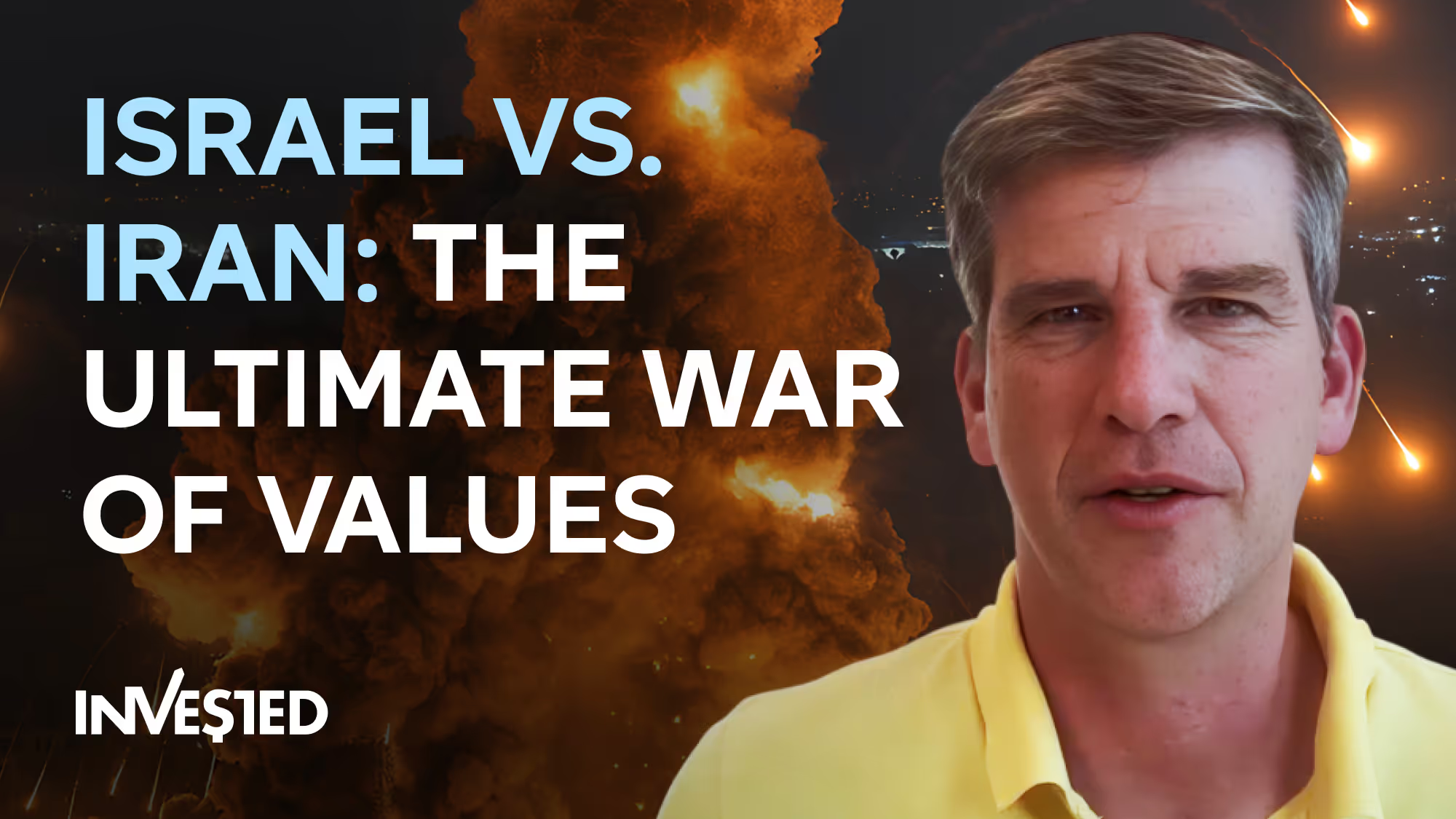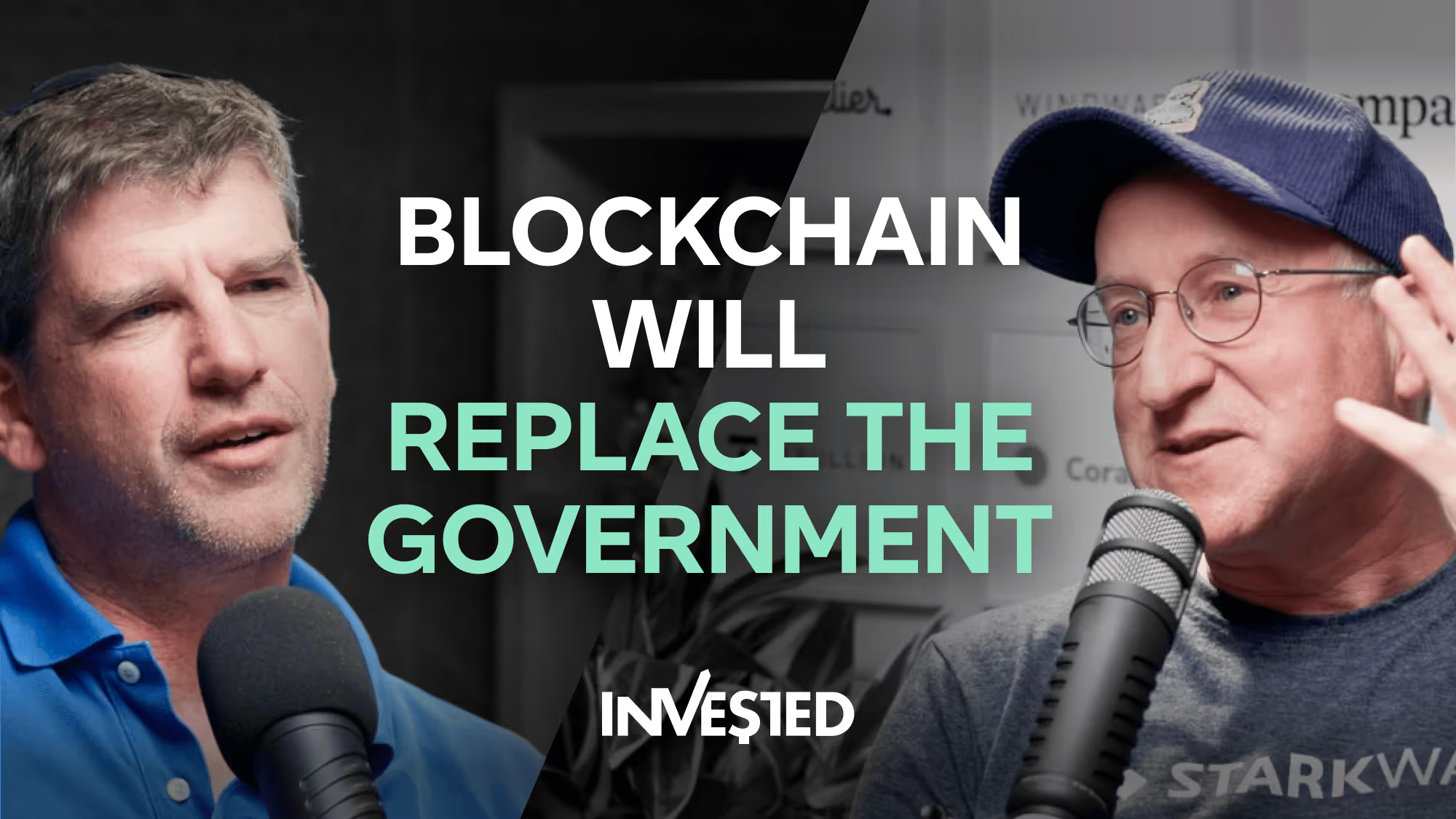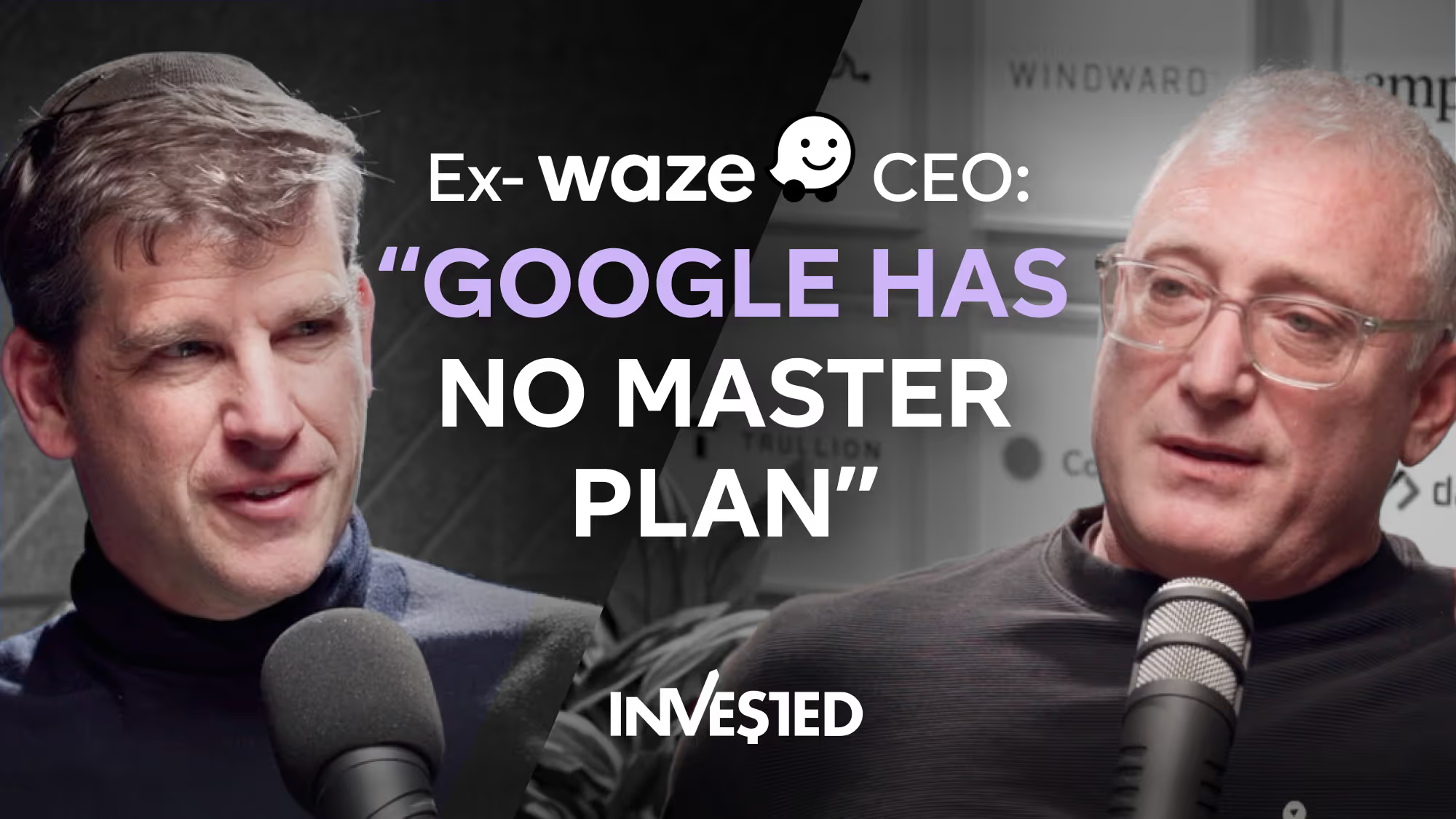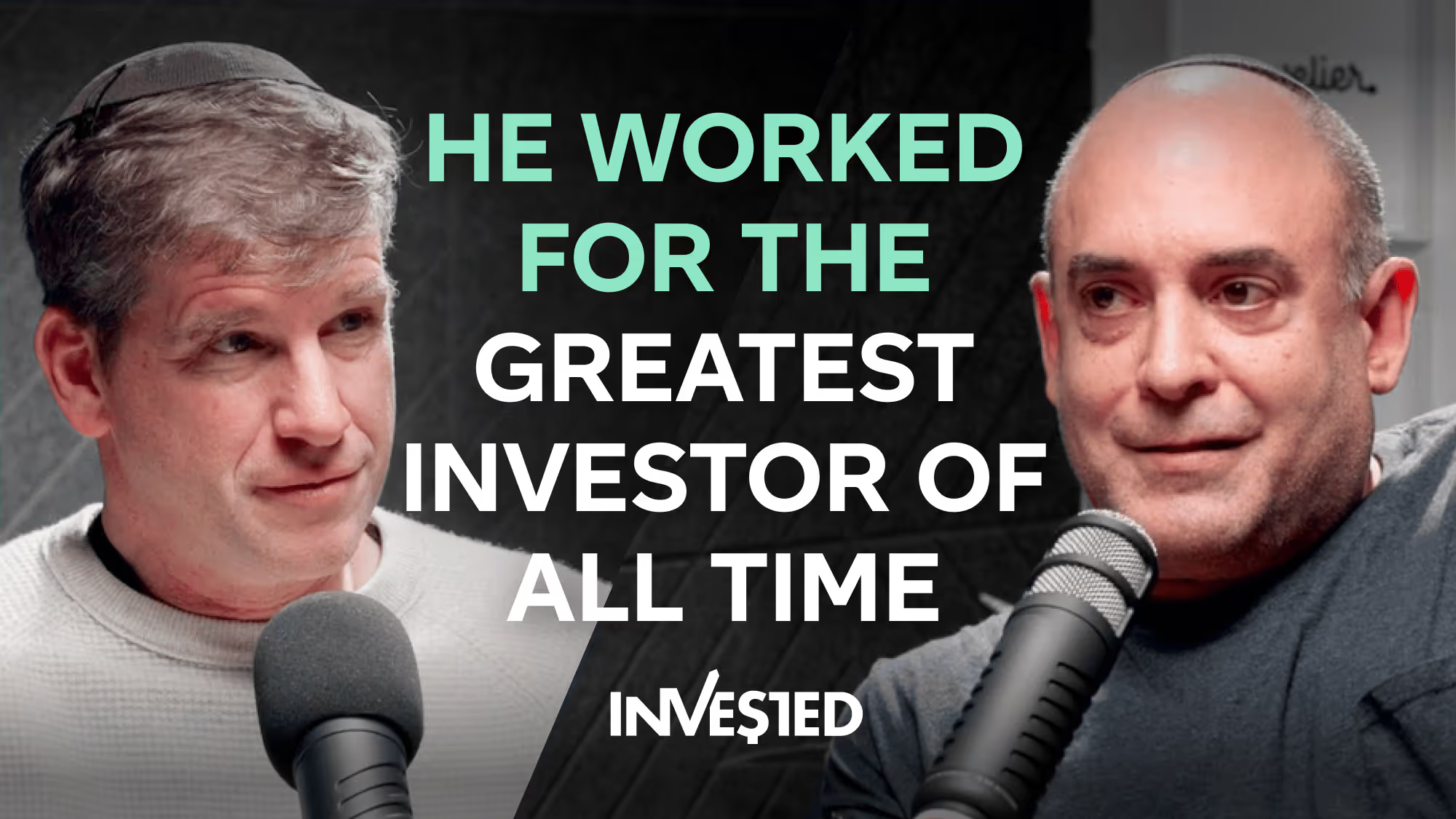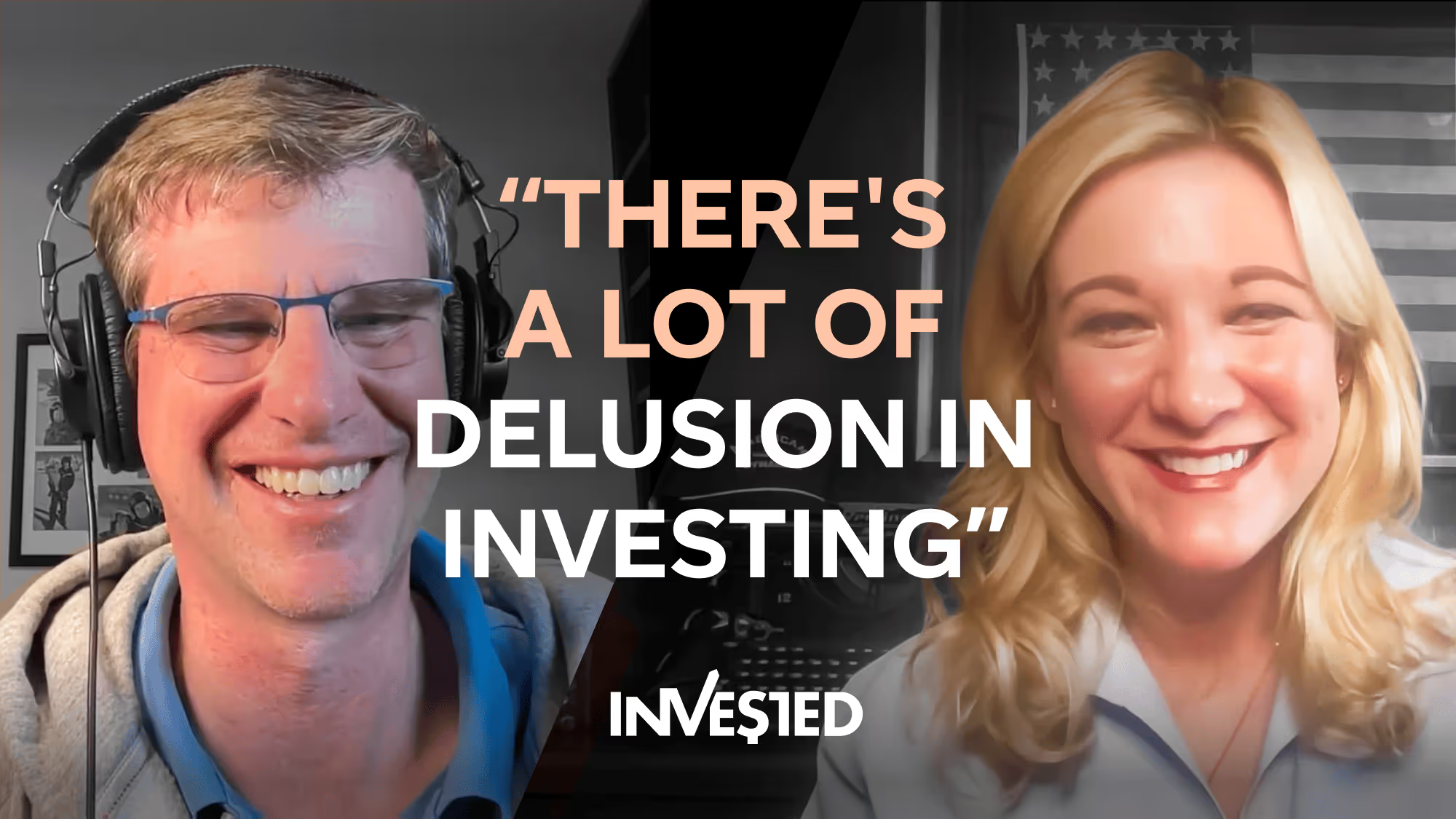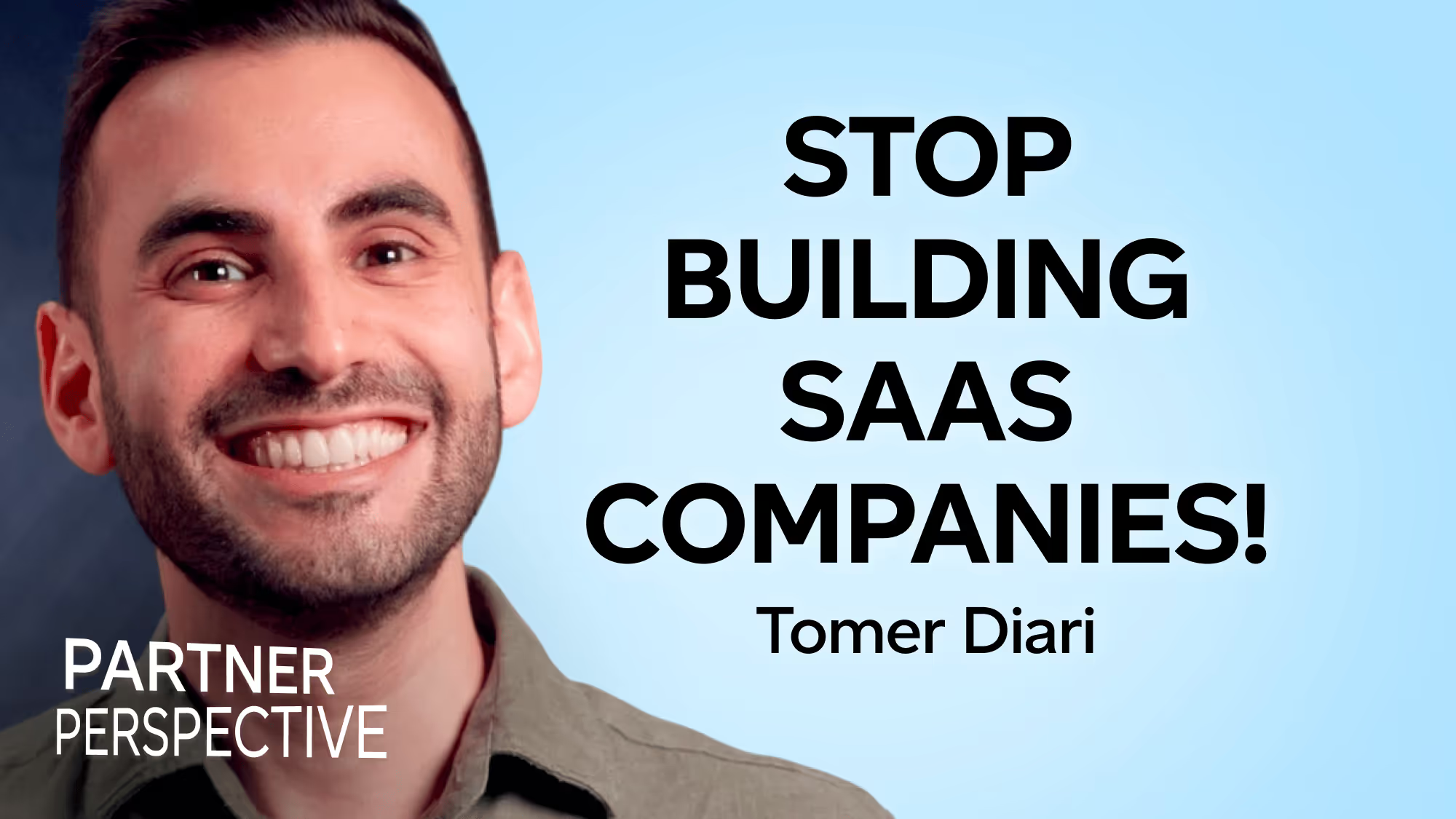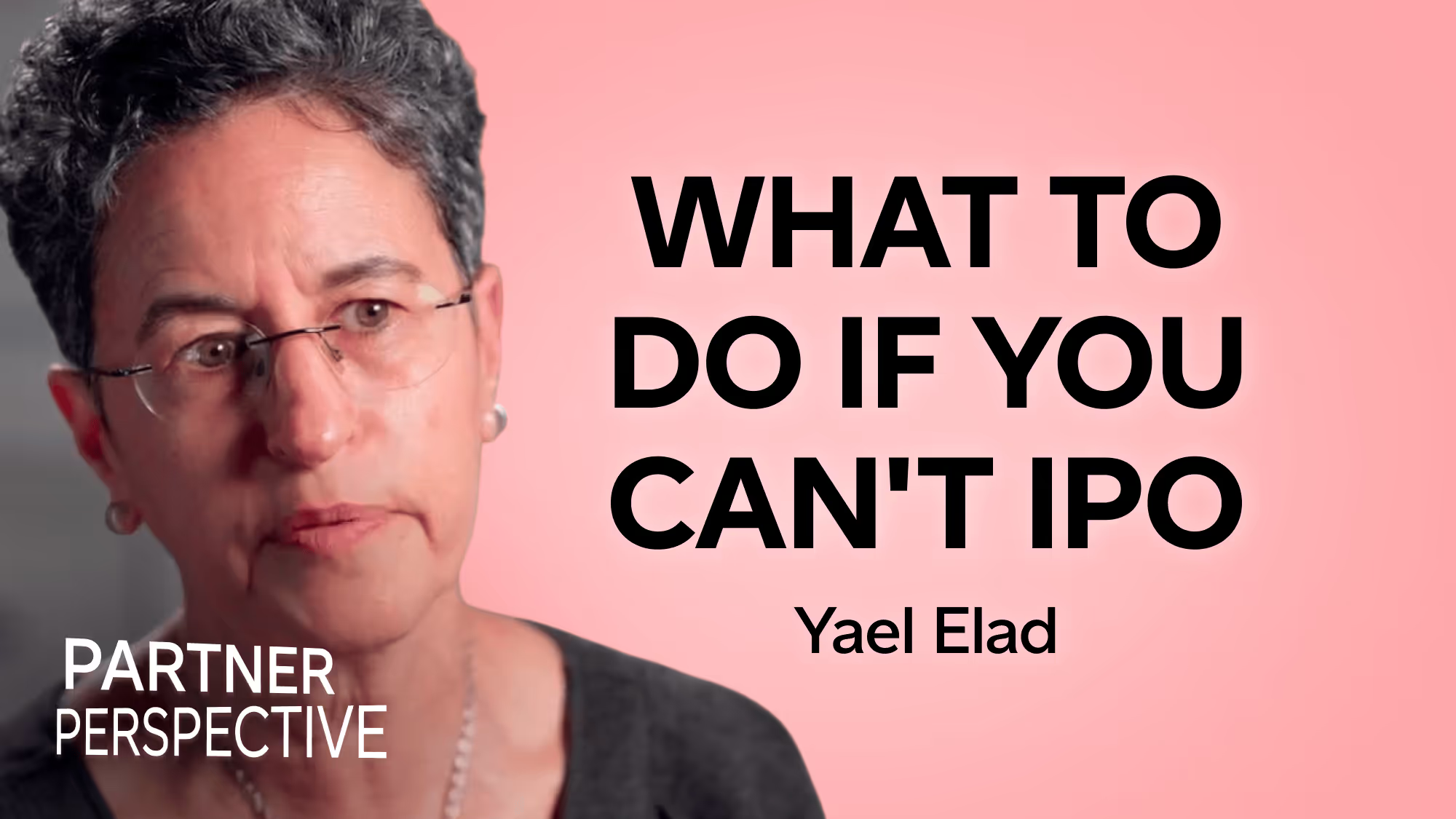Zeev Farbman Takes on Real-Time Diffusion Models



You can’t go ten minutes without someone talking about AI, but most of the time, it’s hype without substance. Almost Human exists to change that; to dig past the noise and reach the sharp ideas, technical breakthroughs, and human stories that actually shape the future.
Let’s cut through the noise.
Zeev Farbman Takes on Real-Time Diffusion Models



How can values create value? On this podcast, Michael Eisenberg talks with business leaders and venture capitalists to explore the values and purpose behind their businesses, the impact technology can have on humanity, and the humanity behind digitization.
Zeev Farbman Takes on Real-Time Diffusion Models
Zeev Farbman Takes on Real-Time Diffusion Models
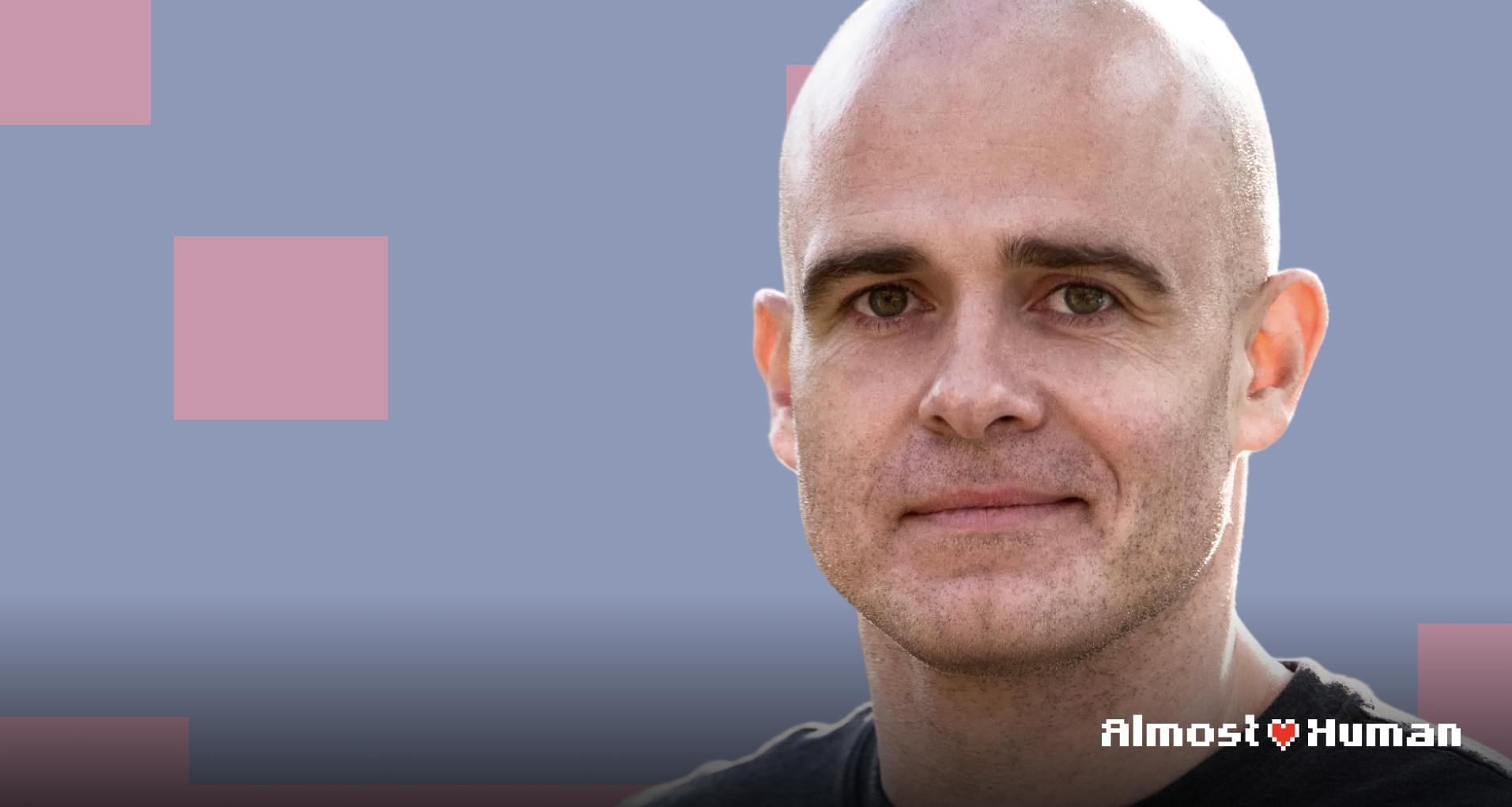
Zeev Farbman Takes on Real-Time Diffusion Models
Zeev Farbman Takes on Real-Time Diffusion Models
- [00:00:30] Intro: Eden welcomes Zeev & the real-time, on-device video breakthrough
- [00:01:36] Why LTX-2 matters: multimodal → one model, many outputs
- [00:02:24] Transformers converge: no more “image model vs video model” silos
- [00:03:34] Programmable pixels: the real value is real-time, user-responsive video
- [00:04:30] China’s edge: open weights, edge-first strategy, Alibaba leading
- [00:06:27] Israeli startups standardizing on Chinese stacks (Qwen, G-PIO)
- [00:08:40] Product → Platform: Lightricks restructures into model + API + apps
- [00:11:02] Foundation models depreciate fast; value shifts to productization
- [00:13:23] Gaming-engine analogy: model = rendering core, tooling = moat
- [00:19:25] Real-time personalized ads: creative per user, per impression
- [00:24:21] LLM → JSON pipelines: APIs replaced by structured scene instructions
- [00:31:31] Cost shift: state-of-the-art video running on consumer GPUs, not data centers
What if video wasn’t a file you export, but a service that responds to every viewer in real time?
In this episode, Eden Shochat talks with Lightricks co-founder & CEO Zeev Farbman about LTX 2, their real-time video diffusion model that runs on edge devices (phones and gaming GPUs) instead of giant cloud data centers.
They break down:
- Why “every pixel is programmable” is the real story behind diffusion models
- How we got from Facetune to a real-time video engine
- Why edge AI might beat cloud APIs for the next wave of products
- China’s open-weight strategy vs the West’s closed, API-first approach
- What happens when you can personalize every ad impression with generated video
- Why foundation models are a fast-depreciating asset and where the real moats will be
- How Lightricks thinks about being both a product company and a platform/API
- The coming shift from blank 3D scenes to “never start from scratch” creative workflows
- The sci-fi idea from Neal Stephenson’s Diamond Age that Zeev would build as a startup today
If you’re a founder, engineer, or creator thinking about the future of video, gaming, or adtech, this episode is a playbook for what’s now possible when real-time, per-user video runs on everyday hardware.
Please rate this episode 5 stars wherever you stream your podcasts!
00;00;00;03 - 00;00;03;02
Eden Shochat
But the only respect we got from Zuckerberg was
00;00;03;06 - 00;00;08;22
Zeev Farbman
I have to say, I'm very surprised that more people in the Western tech ecosystem don't realize it
00;00;08;22 - 00;00;11;00
Eden Shochat
it's the world's fastest depreciating asset. So
00;00;11;00 - 00;00;16;01
Zeev Farbman
at some point we realized that we were in a way bigger game that we initially imagined.
00;00;16;07 - 00;00;21;27
Eden Shochat
and we actually license that to Facebook at the time when people thought that we're competing, they were using our tech.
00;00;21;29 - 00;00;30;24
Zeev Farbman
It's doable. Obviously Nvidia won't be happy with it because they're like price differentiator.
00;00;30;27 - 00;00;36;10
Eden Shochat
Welcome to today's episode of Almost Human with Zev Forman of Light Tricks.
00;00;36;13 - 00;00;42;13
Eden Shochat
the F and light tricks are pioneering in the ability to generate video in real time.
00;00;42;18 - 00;00;50;03
Eden Shochat
More than that, in the episode, I actually learned that they do it on and devices so they can do real time video generation
00;00;50;09 - 00;00;50;29
Eden Shochat
on mobile.
00;00;51;03 - 00;01;12;03
Eden Shochat
this is one of the most interesting areas because it moves super fast today. And whoever has the upside or the benefit of creating content on the fly for a specific user by their preferences, that's going to be an enabler for many companies in the coming years.
00;01;36;24 - 00;01;41;07
Eden Shochat
Come back and.
00;01;41;10 - 00;02;00;06
Eden Shochat
prompting sometimes work sometimes doesn't. And you just release light to as part of light tricks. And that's a major shift in how you think, right, as a product company. And we'll speak about that. But if you look at LTE, it's like, why is it such an important release?
00;02;00;09 - 00;02;05;05
Eden Shochat
What would you say? Like, why should people take note?
00;02;05;07 - 00;02;24;15
Zeev Farbman
I think there are a bunch of major technological trends that, kind of happened. It took us a while to figure out, and I think like this through these is like a major data point that might change. And if people perception about a lot of priors in the world of vehicles. So let's kind of go over some of them.
00;02;24;18 - 00;02;48;29
Zeev Farbman
Imagine that we're still operating the world where a you have like image model, video models, audio models like speech models, blah, blah, blah, like a whole lot of these things under the hood, like all of them by now, like riding on top of the transformer architecture. And what you kind of start to realize is that if you like this multimodal model of the tackles, different modalities, you can derive all these like specific models from it.
00;02;49;02 - 00;03;10;16
Zeev Farbman
Right? So imagine like, internally at some point we realize, okay, they're like these disrupters to doing things right, like companies who are like tech and kind of vertical applications in some sense is like disrupting the disruptors because, besides, like lemon diffusion models, I almost don't see any underlying technology that you need now in order to kind of to build.
00;03;10;18 - 00;03;30;22
Zeev Farbman
Yeah. Applications on top. A another point is that, for example, like a year ago, all of us assumed that, for example, creative like autoregressive generation for real time use cases, right, where you can constantly generate kind of one lots and like small amount of frames. And for example, navigating the virtual world is very different than doing like embed generation or like generating the whole video.
00;03;30;24 - 00;03;34;01
Zeev Farbman
Now realize it's also not sure like these two things are converging.
00;03;34;08 - 00;03;49;10
Eden Shochat
I think what we're founders just miss this point. It's not about the video looking good. Right? It's like it can be generated while watching it, right in real time, responsive to what the user does. And every pixel is programable.
00;03;49;13 - 00;03;50;24
Zeev Farbman
long story short, you're right.
00;03;50;29 - 00;04;13;17
Zeev Farbman
what we kind of didn't realize initially. The same architecture can be made kind of autoregressive. We've kind of a small tweaks. And yeah, it is a big deal because like a year ago, I didn't think, for example, the diffusion models are going to be soon relevant for real time gaming, I thought, are going to be kind of part of the pipelines where you create, you know, like textures, baking, lighting, kind of all these things.
00;04;13;20 - 00;04;30;02
Zeev Farbman
I've kind of wait a second, if it runs on the consumer hardware and you can make it kind of auto regressive and, you know, that's kind of becomes an appealing experience, obviously. Still, there's like a ton of time until it's going to be a viable alternative to a gaming engine like in the real, but it seems plausible by now.
00;04;30;05 - 00;04;52;11
Eden Shochat
mentioned Google, right. But most of the movement that we're seeing, electrics is pretty much bleeding edge at this point. You see a lot of movement from the Chinese labs, anywhere from Baidu to Tencent. Right. What was the trigger for everything starting on and why don't we see as much movement from the American side to what we're seeing on the Chinese side?
00;04;52;14 - 00;05;07;23
Zeev Farbman
at some point in time. It kind of seems to me that Chinese realized something about the kind of underlying realities of this tech, and they kind of realize that, okay, this thing is going to you because it's going to be everywhere, you know, like edge devices, data centers.
00;05;07;23 - 00;05;28;28
Zeev Farbman
And in order to build kind of a relevant technology, it should be fairly open. Right? It's like very hard to see how edge device, applications can run with APIs. Like it really kind of lends itself to kind of weights being on the device to reduce latency, etc.. And a whole lot of them, I think, started to
00;05;28;28 - 00;05;38;13
Zeev Farbman
create open models where I think the plays kind of long term ability to create defacto standards in the industry and over time to capitalism.
00;05;38;20 - 00;05;44;06
Zeev Farbman
I have to say, I'm very surprised that more people in the Western tech ecosystem don't realize it
00;05;44;06 - 00;05;59;00
Zeev Farbman
and kind of still try to close the AI behind, like walled gardens of the data centers, API, etc.. I think in China at the moment, the most prominent company I would say is like Alibaba, right? They have both great alums, right?
00;05;59;00 - 00;06;10;22
Zeev Farbman
All this like when a series of models which are great and also kind of really good open diffusion models, including video models, it's called van. So at some point we realize, yeah, that's
00;06;10;23 - 00;06;14;19
Zeev Farbman
our biggest competition are going to be China and not the United States.
00;06;14;19 - 00;06;20;07
Zeev Farbman
Somehow Americans still believe that they can close the AI behind, you know, like the walls.
00;06;20;07 - 00;06;27;12
Zeev Farbman
Also the data center, which technologically, it seems to me like kind of a stretch at the moment.
00;06;27;15 - 00;06;48;12
Eden Shochat
actually seeing that most Israeli companies now are building on top of Chinese stack. Now, it doesn't mean that they necessarily use the models, but what what most realize is that if you want research, if you want GPO is a great example. You can have hosted PPO or other forms of, reinforcement learning, but Gpio is just almost a de facto standard.
00;06;48;12 - 00;07;05;15
Eden Shochat
I have not seen a single company that is in Israel that is not doing reinforcement learning with Gpio. Is is there like stack alignment, like is it meaningful or how are you thinking about, if I choose, Chinese stack, how does it determine my future product?
00;07;05;17 - 00;07;27;03
Zeev Farbman
like, this general vicinity of fine tuning lamps, which aren't huge. Google are also playing right there like this gem, a series of lamps and lamps, and they're kind of quite appealing. Like we're constantly contrasting like Jama with, you know, queens of the world. And they're sort of thing like Google are doing kind of a really, kind of really good job.
00;07;27;03 - 00;07;28;23
Zeev Farbman
you can kind of long term.
00;07;28;23 - 00;07;58;22
Zeev Farbman
To me, it seems the Chinese are realize that having a it allows like foundational pieces of technology, releasing more for free over time can give you like a very significant moat. Right? Because you're kind of shaping the technological river. And then you can do considerations like, okay, working with hardware vendors and I determine with them, like, you know, parameter size, like Vram requirements, blah, blah, blah.
00;07;59;00 - 00;08;08;16
Zeev Farbman
So to me, it seems like again, maybe I'm just complimenting too much. To me. Seems there is like some kind of long term thinking there. A that a.
00;08;08;18 - 00;08;10;02
Zeev Farbman
Really a longer term.
00;08;10;02 - 00;08;25;06
Zeev Farbman
That the time horizon that you see in the West. Right. Because here kind of okay. It seems like again we have this cycle that we kind of poured a lot of money in the AI. We kind of expect to see a whole lot of it coming back in two for years, where I think like the analogy to 90s and internet is clear, right?
00;08;25;06 - 00;08;40;05
Zeev Farbman
All the geeks in the 90s understood that, okay, internet is going to be a thing at some point. We're going to play games over in the internet to communicate and a ton of other things. Just might not happen 2 or 3 years. Right. So think like ten years, maybe again, I hope I don't give them too much credit.
00;08;40;05 - 00;08;46;19
Zeev Farbman
Understand this reality is just like one. To be sure that the underlying tech is created, there.
00;08;46;21 - 00;09;09;10
Eden Shochat
So you're in a pretty unique position, right? Like, Trix is a product company. Most, if you look at labs, right. It's, building a platform without the killer app has always been a challenge. But as a product first company, how did you get to here where you're releasing APIs, you're becoming a platform. Like how you think, like, what made you what drove you there?
00;09;09;13 - 00;09;10;27
Zeev Farbman
What we discovered over time.
00;09;10;27 - 00;09;11;00
Zeev Farbman
And
00;09;11;00 - 00;09;24;24
Zeev Farbman
is that there are no niches in foundational models at this at the moment, because like what we thought that, okay, we're doing efficient models. No, no, no, it doesn't work like that. You have a behemoth model you can distill to model as small as you want, and it's still better.
00;09;24;24 - 00;09;29;20
Zeev Farbman
And they just, you know, like train the smaller model from the get go. These things weren't clear to us. So
00;09;29;23 - 00;09;35;06
Zeev Farbman
at some point we realized that we were in a way bigger game that we initially imagined.
00;09;35;09 - 00;09;35;28
Zeev Farbman
And the silver.
00;09;35;28 - 00;09;36;10
Zeev Farbman
Lining.
00;09;36;10 - 00;09;37;02
Zeev Farbman
Is that,
00;09;37;02 - 00;09;45;15
Zeev Farbman
companies that in the West that are doing multimodal models like open air Google, they decided to go API in kind of closed route, and we decided to go an open road.
00;09;45;18 - 00;09;46;19
Zeev Farbman
But in terms of the.
00;09;46;19 - 00;10;09;18
Zeev Farbman
A shift in the company culture, it's obviously huge. So we already kind of decided to restructure company into kind of two divisions, one that tackles the kind of our existing a mobile business. And one is around the new business. But even like in LTE, in AI business, we really don't believe that technology itself is a long term differentiator, right?
00;10;09;18 - 00;10;18;21
Zeev Farbman
Because we're talking here in the end of the day about like applied math. Your researchers are going to conference meeting other researchers, like the whole thing diffuses like pretty quickly.
00;10;18;23 - 00;10;19;25
Zeev Farbman
So what we do think is going.
00;10;19;25 - 00;10;44;10
Zeev Farbman
To happen is that every technology is going to hit certain limits, right. So in order to overcome these limits, you'll need to productize something, which basically means bringing like human interaction in order to overcome the limitations of the machine. So that's the reason that even little we decided that, okay, we're building the stack of foundational modeling where the business model is licensing on top of that API.
00;10;44;13 - 00;10;55;18
Zeev Farbman
And on top of that, our internal products where we kind of want to find this place is we're a there are some inherent limitations to the tech and then start to productize like these gaps.
00;10;55;21 - 00;11;02;12
Eden Shochat
that's a really interesting observation. If I look at, you know, foundation models,
00;11;02;12 - 00;11;04;20
Eden Shochat
it's the world's fastest depreciating asset. So
00;11;04;21 - 00;11;11;15
Eden Shochat
you you train it, and then within a year,
00;11;11;17 - 00;11;19;12
Eden Shochat
has capabilities you need to retrain. And the direction you were going really reminds me 15 years back at face.
00;11;19;16 - 00;11;24;14
Eden Shochat
Com, we had a face recognition API, but the only time
00;11;24;17 - 00;11;30;09
Eden Shochat
and we actually license that to Facebook at the time when people thought that we're competing, they were using our tech.
00;11;30;11 - 00;11;33;16
Eden Shochat
But the only respect we got from Zuckerberg was
00;11;33;18 - 00;11;48;11
Eden Shochat
when we released the application called click that took the extreme, extreme capabilities that were not there. There were the almost exactly as you say, the opportunity is you understand the model best, right?
00;11;48;11 - 00;12;09;27
Eden Shochat
So you know where the structural limitations are. You can build a product that works with the model today, not where it will be in two years, but at that same time, for the first time, you'll you'll be licensing the API to effectively your competitors. Right. It's it can be Adobe, it can be Microsoft, it can be meta. It can be anyone.
00;12;09;29 - 00;12;21;08
Eden Shochat
But it's those that are building apps as well. So how does this tension you have unique capabilities in understanding your own model, but now you're also providing access to it to others.
00;12;21;11 - 00;12;32;11
Zeev Farbman
I completely agree with you that there's, like, this magical point where you're understanding where the foundational tech meets its limitations, and that's what you should find. And I.
00;12;32;11 - 00;12;33;06
Zeev Farbman
Kind of.
00;12;33;08 - 00;13;06;15
Zeev Farbman
Already see that it's unfolding the world over the lens. Right. We're seeing that like these two major use cases, like search and coding that everyone kind of realizes, yeah, that's that's a huge thing. And there's like a lot of product innovation to be done there. And although some people are still promising a singularity next year for whatever reason, we also like put a whole lot of effort to productize the thing that you can ask us a little, wait a second, guys, if there's like a singularity, why we need to overcome the limitations with, you know, like for exactly.
00;13;06;18 - 00;13;10;17
Zeev Farbman
But I think like the, you know, we realized.
00;13;10;17 - 00;13;16;16
Zeev Farbman
By now that the singularity might not come next year and we need to figure out the limitations of tech. And these companies are.
00;13;16;16 - 00;13;20;19
Zeev Farbman
Doing it about like licensing to.
00;13;20;21 - 00;13;23;26
Zeev Farbman
Your competitors or perceived competitors.
00;13;23;29 - 00;13;28;22
Zeev Farbman
when I think about what we're doing, always think about the analogy of gaming engine.
00;13;28;22 - 00;13;38;12
Zeev Farbman
Right? Because, okay, there's like some kind of rendering core that initially is very important. So that's like the model, but exactly right.
00;13;38;12 - 00;13;39;22
Zeev Farbman
Like you in the.
00;13;39;22 - 00;13;42;21
Zeev Farbman
End of day you need to kind of render something and whatever.
00;13;42;21 - 00;13;44;17
Zeev Farbman
But like over time.
00;13;44;20 - 00;14;02;06
Zeev Farbman
Like the rendering, is it kind of all this because commodity is like a very smart piece of tech, but it doesn't matter how smart it is, it replicable, like entire ecosystem of tools around in the community, around kind of gaming engine and then also like this company, sometimes they would build the game right. And sometimes like this game is.
00;14;02;09 - 00;14;05;22
Zeev Farbman
Exactly, sometimes exactly like sometimes the game is extremely.
00;14;05;22 - 00;14;11;07
Zeev Farbman
Successful. Like maybe Fortnite now is like really huge driver of Epic's revenues, etc..
00;14;11;09 - 00;14;14;28
Zeev Farbman
But it's still,
00;14;15;00 - 00;14;17;06
Zeev Farbman
Yeah. So I kind of feel about our kind.
00;14;17;06 - 00;14;30;06
Zeev Farbman
Of product earlier and less things that are in the in the same way, in the end of the day, we want to build the engine, the model is like this kind of rendering core. It's very important. It's not the most important thing. What do you want it to do.
00;14;30;10 - 00;14;31;15
Zeev Farbman
Like over time.
00;14;31;17 - 00;14;39;09
Zeev Farbman
Is to create like the scaffolding that will allow developers to build applications really easily on top of what you are offering.
00;14;39;11 - 00;14;40;15
Zeev Farbman
And then you obviously can kind of.
00;14;40;16 - 00;14;41;17
Zeev Farbman
Build your own stuff.
00;14;41;17 - 00;14;42;19
Zeev Farbman
And maybe the stuff.
00;14;42;19 - 00;14;53;17
Zeev Farbman
You're building is going to be competitive with what other people are building on top of your model. Like the same way that I don't know, like in the FBI genre, people are doing like Fortnite clones, etc..
00;14;53;19 - 00;14;54;16
Zeev Farbman
Frankly, it's not a huge.
00;14;54;16 - 00;15;07;10
Zeev Farbman
Concern. And, being in a position when you can kind of get like really deeply inside your model and address the needs of a because I think it's a unique position to have.
00;15;07;13 - 00;15;32;17
Eden Shochat
Yeah. Though I don't envy you the first discussion internally, if one of your product groups is saying, well, you're actually enabling my competitor. So there's bidding against me in the marketplace, right. And and some applications can be pretty minimal. Some applications can be meaningful. It can be an x ly tricks guy that left and is now building a lighter competitor on top of your APIs.
00;15;32;17 - 00;15;51;29
Zeev Farbman
for sure. So listen like at the moment, what I told the guys is that a studio okay. Like I mean it grew like really nicely this year. It's not a huge product yet. And if you want to kind of scale the usage model quickly, we have to do it for companies that already have like a very solid distribution.
00;15;51;29 - 00;16;10;19
Zeev Farbman
Right. So if someone is coming to me and saying, listen, we're going to do avatars, right? And like inside libraries, but we already have companies that are doing things like really at scale in different domains, etc. licensing the tech in the best possible and convenient ways to the people who already have the distribution is going to be a priority, right?
00;16;10;19 - 00;16;13;18
Speaker 2
Because that's.
00;16;13;21 - 00;16;25;15
Eden Shochat
Like it's actually a business that enables a different part of their business, but it's super profitable potentially by itself. But Amazon is still in the business of selling you stuff.
00;16;25;18 - 00;16;41;06
Eden Shochat
By the way, other grocers don't want you to use AWS, which which is interesting, but Amazon by itself, they're also a core tenant. So they provide demand on top of AWS. They and the excess demand can be sold. But.
00;16;41;08 - 00;16;42;13
Zeev Farbman
There's like if just like think.
00;16;42;13 - 00;16;49;01
Zeev Farbman
About the scale of opportunity here and what we discussed about like the technological stack or the future etc..
00;16;49;03 - 00;16;49;16
Zeev Farbman
As.
00;16;49;16 - 00;17;04;07
Zeev Farbman
Much as like a single application can be exciting and it is super exciting. Listen, like I love what we're doing with the studios. It's great. Trying to create like a gaming engine is a different thing, right? Like,
00;17;04;10 - 00;17;05;07
Zeev Farbman
You know, like even.
00;17;05;07 - 00;17;07;23
Zeev Farbman
From a kind of computer graphics geeks perspective,
00;17;08;01 - 00;17;09;10
Zeev Farbman
It's fun.
00;17;09;13 - 00;17;12;04
Zeev Farbman
But you were like investing a whole lot of effort.
00;17;12;04 - 00;17;16;01
Zeev Farbman
Into because of particular details with specific game, which is.
00;17;16;01 - 00;17;17;01
Zeev Farbman
Like some people's.
00;17;17;01 - 00;17;18;19
Zeev Farbman
Idea of fun.
00;17;18;21 - 00;17;21;04
Zeev Farbman
Like building something kind of more infrastructural.
00;17;21;04 - 00;17;24;28
Zeev Farbman
Like a piece that I would people use to build their stuff.
00;17;25;00 - 00;17;26;21
Zeev Farbman
It's another it's really.
00;17;26;21 - 00;17;31;05
Zeev Farbman
It's kind of another layer of excitement. Right? Like when.
00;17;31;07 - 00;17;48;06
Eden Shochat
integration. Like how high will you go. Like, should you provide just the underlying API? Should you build a game engine? Should you build right. Because margin is actually the higher you up in the stack, the margin is better. And also your understanding of your capabilities is better.
00;17;48;09 - 00;17;50;15
Zeev Farbman
We that I agree. I almost like feel.
00;17;50;15 - 00;18;09;24
Zeev Farbman
That again, like the foundational piece itself that everyone is talking about at the moment is going to be commoditized really quickly. And also the increments and quality is going to plateau over time. And I don't think like this time is like that far away in the future, and then the game is going to be around extremely like the the tooling around it.
00;18;09;24 - 00;18;30;02
Zeev Farbman
Right. Because at the moment, like diffusion models read like really kind of cool results. But everyone is still kind of struggling in kind of taming them, creating exactly what they want. And I think like the next frontier is clearly there, right? Because in terms of the fidelity of the visuals, they're like above and beyond of what? Like rendering engines or like gaming Engine can produce.
00;18;30;04 - 00;18;34;24
Zeev Farbman
But in terms of controllability, they're nowhere near of what, like the.
00;18;34;27 - 00;19;05;23
Eden Shochat
that in a second. I think actually, it's a great segue to what opportunities a platform actually allows, like the change of technology, things that didn't that wouldn't work a year ago. And some of them are. Yeah, obviously you can, build a new Epic Games game engine. But even if you look at an industry as big as advertising, right, if you could now have, you know, specific creative per impression optimized for the context of the user with a generated media.
00;19;05;25 - 00;19;25;15
Eden Shochat
Right. That sounds great. And ad tech actually buying it. This is two different things. Have you had discussions that are starting to particularly like what's what's a video generated on a per user basis like what's is it possible? Do you already have customers or prospects interested with it?
00;19;25;17 - 00;19;27;13
Zeev Farbman
This specific use case,
00;19;27;16 - 00;19;54;17
Zeev Farbman
about like, tailoring advertisements and the level we couldn't do before is like one of these great examples of what will emerge when we have the lams and diffusion models working together and making in the real time considerations that before that were like reserve to a human marketeers, for example. Right. Because a lot of like a whole lot of these considerations.
00;19;54;17 - 00;20;05;10
Zeev Farbman
Okay. You know, like starting to run the campaign, only seeing some impressions. And they want kind of to tweak things a little bit. And now, like the cycle is still kind of pretty elaborated. Right. That okay, I'm running a.
00;20;05;10 - 00;20;06;03
Zeev Farbman
Campaign.
00;20;06;03 - 00;20;20;25
Zeev Farbman
And I'm seeing some kind of feedback. I'm going to my creative teams or like updating the assets. So we're talking maybe about doesn't have to let's say it's like very agile team. So in the same day they can maybe like update ideas.
00;20;20;27 - 00;20;25;02
Zeev Farbman
Exactly, exactly. Yeah.
00;20;25;05 - 00;20;32;00
Zeev Farbman
Right. So you already kind of imagine how you're giving.
00;20;32;02 - 00;20;35;10
Zeev Farbman
I agree, like you guys are clearly.
00;20;35;10 - 00;21;00;03
Zeev Farbman
Capable of making most of these considerations. Right. Like figuring out the according to the audience feedback, what might be changed. And like, you know, like the assets updated. And it can be until user bases and the diffusion models are getting to the point where you've explained to them what needs to change, it can change, right? So let's take like the most basic example, I don't know, we like advertising like t shorts and we're like running with some audience.
00;21;00;03 - 00;21;14;11
Zeev Farbman
And we now want you to see what happens. And when we change the color of the t shirt. Right. So diffusion models these days are capable enough to take exactly like the videos you have. And just to, to change the t shirt and obviously kind of things way above and beyond.
00;21;14;13 - 00;21;17;07
Zeev Farbman
But just like for me, maybe like the.
00;21;17;07 - 00;21;23;00
Zeev Farbman
Salient point here is that we kind of realize that in the labs making high level considerations and
00;21;23;04 - 00;21;29;18
Zeev Farbman
working with diffusion models on creating assets at the speed imagined before unlocking new things. Right.
00;21;29;18 - 00;21;37;25
Zeev Farbman
And like you, you're going to start to like with this use case for advertisers or for creating like personalized advertisement on the fly.
00;21;37;27 - 00;21;40;08
Zeev Farbman
But we can, you know, think about.
00;21;40;14 - 00;21;44;16
Zeev Farbman
Maybe even bigger changes like to the entertainment industry, right. And like.
00;21;44;18 - 00;21;47;04
Speaker 2
Yeah, everything.
00;21;47;07 - 00;21;53;06
Eden Shochat
business because if you can prove uplift on the Roas you will have technology shift.
00;21;53;08 - 00;21;56;26
Zeev Farbman
Now it's a good point.
00;21;56;28 - 00;22;00;28
Eeden Shochat
at kind of entertainment is just a process. Right.
00;22;01;01 - 00;22;02;09
Unknown
it's a lot.
00;22;02;12 - 00;22;02;26
Eeden Shochat
there. So
00;22;03;02 - 00;22;07;14
Eden Shochat
what I push back on is it goes back to company structure.
00;22;07;16 - 00;22;30;05
Eden Shochat
It's I you now divide this to the app group and the platform group. But the question is if you think of structure in the company, is there an enablement group that should be there that takes on, hey, advertising will change. Here are the things in the stack that we need to prove out. We want to show an uplift and by showing it right, if you build it, they will come.
00;22;30;05 - 00;22;40;16
Eden Shochat
Never works. But if you show what's possible, it can. As a CEO, that's a stretch. Already having two groups,
00;22;40;19 - 00;22;42;21
Zeev Farbman
long story short, like it's a big.
00;22;42;21 - 00;23;00;23
Zeev Farbman
Conceptual problem, what you mentioned because you kind of realize, okay, there are like a ton of different use cases, right, for the model. And some of them like very exciting technologically. Some of them are almost like personally exciting, right? Because these are the kind of things that you like to do. Some of them just like huge markets,
00;23;00;26 - 00;23;07;08
Zeev Farbman
And then it's a challenge that we kind of trying to figure out at the moment was like even like.
00;23;07;08 - 00;23;09;09
Zeev Farbman
The you mentioned the API.
00;23;09;12 - 00;23;10;05
Zeev Farbman
Okay.
00;23;10;07 - 00;23;18;13
Zeev Farbman
what's the right API that both kind of minimal and expensive enough for people to build a lot of things on top of it. Right.
00;23;18;13 - 00;23;22;22
Zeev Farbman
And frankly, I can't it is a challenge even like when you're talking.
00;23;22;22 - 00;23;25;06
Zeev Farbman
About like 3D engines,
00;23;25;08 - 00;23;30;00
Zeev Farbman
right? And the these guys are and like
00;23;30;03 - 00;23;39;15
Zeev Farbman
now I talk to a whole lot of them kind of realize, okay, diffusion models just like do global illumination better. So in the end you're just like getting prettier visuals faster and cheaper, etc..
00;23;39;17 - 00;23;40;23
Zeev Farbman
But they have like existing.
00;23;40;23 - 00;23;52;26
Zeev Farbman
Pipelines and some of them are pretty different. And it's almost like hard to beat on like one customer because you kind of never know, right? So you want to have something the kind of generic enough for a lot of people.
00;23;52;26 - 00;23;55;15
Zeev Farbman
Try it. So it it's kind of the same challenge.
00;23;55;15 - 00;24;21;19
Zeev Farbman
With the aim. Your specific example of advertisement industry. This is like really, really high level. The way of think about it is like what we realize now is that like this multimodal diffusion model, they work best with very capable limbs, kind of that kind of spell out things for them, like initially, like when people train diffusion models, they to to click like this alt text on the internet.
00;24;21;19 - 00;24;46;27
Zeev Farbman
Right. And that was like the text encoding. And then, you know, but that's not how we do this thing at the moment. Like the caption part became immense. It's like this huge Json file that describes kind of this scene with the crazy amount of details. And then when you want to use the diffusion model, right. That's like the best way to provide input to it is using like it allows that are capable to provide such a structured input.
00;24;46;29 - 00;24;48;15
Zeev Farbman
And then you kind of realize, wait a second,
00;24;48;21 - 00;24;50;14
Zeev Farbman
With the way we thought about like.
00;24;50;14 - 00;24;51;18
Zeev Farbman
APIs in the.
00;24;51;18 - 00;24;56;24
Zeev Farbman
Past is a little bit of obsolete, right? Because when we think about API, you want to.
00;24;56;24 - 00;25;07;01
Zeev Farbman
Give us like very kind of focused functionality with the people get their heads around. It's kind of both compact on the other say, you know, give like a big span of capabilities.
00;25;07;04 - 00;25;10;05
Zeev Farbman
And now we can just like give you an example that we're like, we have a problem at the.
00;25;10;05 - 00;25;21;23
Zeev Farbman
Moment, right? We're going to like release the feature that allows you to take an existing video and just like say, okay, here you can just like change stuff, right? Like the person instead of sitting can stand up and go down.
00;25;21;23 - 00;25;26;13
Zeev Farbman
And then you kind of realize even like this single there like a bunch of.
00;25;26;13 - 00;25;29;04
Zeev Farbman
Different functionalities there, then from the.
00;25;29;04 - 00;25;30;01
Zeev Farbman
Common user really.
00;25;30;01 - 00;25;40;05
Zeev Farbman
Kind of seem right because some user can see this and I just like want everything to be the same, but for a new object to enter the scene, right? So other people can say this and I would just like to do.
00;25;40;07 - 00;25;42;18
Zeev Farbman
And very like for.
00;25;42;21 - 00;26;01;03
Zeev Farbman
Different technological rendering grounds that kind of get there and you kind of start to realize maybe that's the best way to tackle it, is just to be on another level of abstraction where the user is actually gives like, director level instruction and kind of a human that which. And then the.
00;26;01;09 - 00;26;02;03
Zeev Farbman
Alarm.
00;26;02;05 - 00;26;22;04
Zeev Farbman
Is tuned to create like structured input to the model that can be even kind of multi shot and not zero shot. Right. Because imagine that I don't know the constructions that create a trailer. Then someone need to explain the diffusion model that you're going to create like a bunch of clips with the different duration where like one condition the neighbor and they should have like hard cuts, right?
00;26;22;04 - 00;26;24;15
Zeev Farbman
So.
00;26;24;18 - 00;27;01;05
Eden Shochat
you're basically saying how do we target less technical audiences or how do I achieve more control. By having an alum provide ongoing feedback like if I'm a creator you mentioned before and entertainment being a potentially very large business. Right. I'm I'm not that I'm not the director. Right. I don't think that way. So for a creator, if you look at the delta between where you are now or the industry is now, and a TikTok influencer that wants to use that technology for something in in their primary workflow, is that what's required?
00;27;01;07 - 00;27;10;13
Zeev Farbman
is an is a technical animator or like 3D model or whatever you basically need to give like this structure Json by yourself, by moving like a ton of sliders.
00;27;10;13 - 00;27;16;08
Zeev Farbman
Right. Because like these rendering models, they just like have like a crazy amount of parameters. Right.
00;27;16;08 - 00;27;18;00
Zeev Farbman
So I think like.
00;27;18;05 - 00;27;49;15
Zeev Farbman
What's going to happen over time is that and again, the levels are changing how we interact with machines. So they will be able to speak with you at your level. Right. And the level the language that the animator speaks is different than the language of director of the and the language of the executive, who kind of runs the whole projects, etc. and I think what's going to happen is that in the labs will be able to translate it to kind of a structured input that can, you know, make the whole machinery work.
00;27;49;18 - 00;27;55;09
Zeev Farbman
And obviously there are going to be some people who can get lower and lower to the level of abstraction. Right?
00;27;55;09 - 00;28;04;12
Zeev Farbman
So but it's right. But it's going to be it's amazing. Right. Like classically in computer 3D graphics, we are constantly.
00;28;04;15 - 00;28;13;29
Zeev Farbman
Constantly having like this problem of a blank page where like opening like a blender or Maya 3D studio where it is staring at the blank page and in order to create something, you need to invest a ton of effort right, with.
00;28;14;00 - 00;28;14;12
Zeev Farbman
To create.
00;28;14;12 - 00;28;15;28
Zeev Farbman
Some kind of scene.
00;28;16;00 - 00;28;17;21
Zeev Farbman
So we are like really working kind.
00;28;17;21 - 00;28;28;14
Zeev Farbman
Of in the a bottom up part die where we just like okay, pieces, pieces. We're like assembling together and the scene assembly. And yet it's extremely hard, just like most people can't like create this way.
00;28;28;17 - 00;28;30;18
Zeev Farbman
Like I think like with diffusion models.
00;28;30;21 - 00;28;31;03
Zeev Farbman
We're going to.
00;28;31;09 - 00;28;32;04
Zeev Farbman
See something kind of.
00;28;32;04 - 00;28;36;21
Zeev Farbman
Slightly different. You never have like a blank page. You just like imagine something, you get something right.
00;28;36;23 - 00;28;38;17
Zeev Farbman
And then it's like really top.
00;28;38;17 - 00;28;42;16
Zeev Farbman
Down approach where you can tweak things more and more and more.
00;28;42;21 - 00;28;45;15
Zeev Farbman
So sometimes when kind of discussing the scenes internally, it's saying, listen.
00;28;45;15 - 00;28;57;11
Zeev Farbman
Guys, like, we need to get to a point where a if the person requires like the human who is working with the system, they need to be able to change every pixel in the output.
00;28;57;13 - 00;29;06;05
Speaker 2
Okay.
00;29;06;07 - 00;29;11;19
Speaker 2
Like.
00;29;11;21 - 00;29;16;10
Zeev Farbman
It was like, I think just just want to understand when you're saying repeatability, you're.
00;29;16;10 - 00;29;24;05
Zeev Farbman
Talking about the ability to create the consistent world characters that you can revisit, right? So it's not kind of changing
00;29;24;07 - 00;29;38;14
Eden Shochat
I'm actually building a brand. I'm building a character that I can then maintain over time and introduce to different videos. Yeah, that's, that's that's like an the epiphany of, of where we want to go. Right. That's it becomes an
00;29;38;16 - 00;29;41;22
Eden Shochat
NCAA type out. We'll talk about types of businesses, but.
00;29;41;25 - 00;29;42;28
Zeev Farbman
Just like had the.
00;29;43;00 - 00;29;58;05
Zeev Farbman
You know, conversation with Professor Danny Coyne or from Tel Aviv University. A he was looking my PhD advisory committee and I asked him recently, Danny, what excites you these days? Like what do you think is going to happen next? So basically the same question you're asking me.
00;29;58;08 - 00;30;00;19
Zeev Farbman
And he told me recently, I think the.
00;30;00;21 - 00;30;07;24
Zeev Farbman
Low hanging fruit that we have in computer graphics community in the last five years is the it's not going to be that anymore.
00;30;07;26 - 00;30;11;07
Zeev Farbman
I think the game is going to be exactly around that, like creative control,
00;30;11;10 - 00;30;20;20
Zeev Farbman
right? How we, you know, give all this like, hey, what creative people required to tweak whatever they want. And then our point is consistency, right?
00;30;20;20 - 00;30;27;07
Zeev Farbman
So in terms of fig control, I think a lot of time I don't want to.
00;30;27;07 - 00;30;38;03
Zeev Farbman
Say it's kind of a solved problem. But like the basic modalities, right. How you kind of think about tweaking things and providing hits, an input to the system, I think we're already in good shape for,
00;30;38;05 - 00;30;46;20
Zeev Farbman
consistency. It's a tougher problem, especially when we're talking about kind of like this virtual worlds, right? Imagine you're like creating like 10s of video.
00;30;46;20 - 00;30;52;13
Zeev Farbman
Okay. That's already kind of a lot of tokens. And now you want to keep being this world
00;30;52;13 - 00;30;54;02
Zeev Farbman
but now you need like to condition.
00;30;54;02 - 00;31;12;14
Zeev Farbman
The generation on all the tokens that you already generated. Right. Because you want to consistency and like the attention like this component that runs in this model is like it's intrinsically quadratic. Like, okay, we are trying to linearize it, right? So we're trying to say, well, not all the tokens need to talk to all the tokens.
00;31;12;16 - 00;31;16;18
Zeev Farbman
it kind of feels to me that there are like two trains of thought. There are some people are.
00;31;16;18 - 00;31;31;23
Zeev Farbman
Trying again to create like explicit schemes of how you like package the context. And other people are saying, wait a second, guys. It's like a bitter lesson we need to figure out. Like the machine need to figure out like do some kind of loss function. What's the right way to package the context.
00;31;31;29 - 00;32;14;14
Eden Shochat
you mentioned quadratic. And that directly pushes us towards the business models and cost structure. And I think the the episode won't be complete unless we actually talk about explicit. Right. So generating like video compute intensive generating live video with an attention model. Hugely expensive okay. What's the cost structure. So if what's a cost envelope if I think of 2430 720p I what what what would be my what business models can be enabled because if it costs me ten bucks to do to create a video, it drives what opportunities exist.
00;32;14;17 - 00;32;39;22
Zeev Farbman
So so just like Tldr that it's not expensive at all. Meaning that it can run on edge devices and, I think at the moment people have like this wrong perception of like saw or VR or low level visuals can only run on, kind of enterprise grade hardware. And they're just like plain wrong. Okay. It can run on your, you know, like gaming GPU.
00;32;39;25 - 00;32;41;04
Zeev Farbman
like a lot of people, when we think.
00;32;41;04 - 00;32;50;05
Zeev Farbman
About the AI, they think about the scaling laws. Right? Like what happens when you scale the amount of data, you know, like in the compute and the number of parameters.
00;32;50;07 - 00;32;52;21
Zeev Farbman
And I think a lot of people have.
00;32;52;21 - 00;33;07;09
Zeev Farbman
Like this assumption that it's going to just like keep going up. But I don't think that this and this thing is obviously is expensive, right? So you increase the number of parameters, you increase the amount of data of the amount of compute. The whole thing is becoming more expensive both for training and inference.
00;33;07;11 - 00;33;08;09
Zeev Farbman
But I kind of feel that we're.
00;33;08;09 - 00;33;17;14
Zeev Farbman
Starting to hit the plot of there. Okay. We're not seeing like this crazy parameter increase in the dense models like we saw before. We are.
00;33;17;17 - 00;33;19;12
Zeev Farbman
Like, I think by now, mostly working.
00;33;19;12 - 00;33;31;16
Zeev Farbman
With a mixture of experts. It's really kind of easier to train and they're not as compute hungry, etc. so we're seeing a certain plateau there. I don't think like the costs of training the models are going up. Is that.
00;33;31;18 - 00;33;34;05
Speaker 2
Right? Like right.
00;33;34;07 - 00;33;41;27
Eden Shochat
advertising business or a creator video generator or a new version of Epic Games game engine. So it's
00;33;41;29 - 00;33;42;19
Speaker 2
right.
00;33;42;22 - 00;33;49;22
Eden Shochat
the cost structure on on, on per frame or per second basis? Like what should
00;33;49;24 - 00;33;50;08
Zeev Farbman
Right.
00;33;50;10 - 00;33;52;06
Zeev Farbman
Just like in other trajectories.
00;33;52;06 - 00;34;02;27
Zeev Farbman
They just need to kind of describe in order to answer this question, is that both the training and inference cost also go down over time for the same architecture. So you know.
00;34;02;27 - 00;34;04;12
Zeev Farbman
Like if there is like some people.
00;34;04;12 - 00;34;24;28
Zeev Farbman
Having like this benchmark of how much it cost to retrain Gpt2 or GPT three or like this level of architecture. And the same thing existed for a while in the world of diffusion models, where initially, like they granted a model gave to train stability, 1.41.5 was on the ballpark of million dollars. Maybe it was like $600,000. And we got to a point.
00;34;24;28 - 00;34;40;05
Zeev Farbman
I think that's less activity there. But people were able to show that you can retrain the whole thing from scratch, like in $10,000, right? So we have like this, the number of reject was making things way, way more efficient in the past. Right.
00;34;40;07 - 00;34;42;11
Zeev Farbman
So for example, we like to.
00;34;42;13 - 00;34;52;11
Zeev Farbman
Imagine, like the level of the visuals is, way above what, what you saw in the models a year ago. Like think about like run with Gen three or something like that.
00;34;52;13 - 00;34;55;07
Zeev Farbman
And a lot of people back then assume that there is no way.
00;34;55;07 - 00;35;03;19
Zeev Farbman
That Gen three is going to run with consumer hardware takes two, although it looks looks way better and it's multimodal, we'll run. So we seen.
00;35;03;19 - 00;35;09;15
Zeev Farbman
Like a significant kind of reduction in costs. So again, like once you're talking about like edge.
00;35;09;15 - 00;35;12;04
Zeev Farbman
Devices like how much electricity is going to be.
00;35;12;06 - 00;35;13;15
Zeev Farbman
Well not that far away.
00;35;13;15 - 00;35;21;01
Zeev Farbman
On from the electricity that you're spending on games at the moment. Yeah. Like definitely heats up the battery of your smart for but it's doable.
00;35;21;04 - 00;35;25;23
Zeev Farbman
And that to me is like a really kind of big shift that people.
00;35;25;25 - 00;35;27;00
Zeev Farbman
Didn't notice here
00;35;27;01 - 00;35;32;00
Zeev Farbman
because everyone is operating under the assumption that we need all these big data centers, and.
00;35;32;00 - 00;35;33;02
Zeev Farbman
Maybe we will need.
00;35;33;02 - 00;35;35;13
Zeev Farbman
Them, because somehow we'll show another breakthrough in.
00;35;35;15 - 00;35;39;14
Zeev Farbman
Architecture that could increase, like the size of parameters so much that will.
00;35;39;16 - 00;35;43;01
Zeev Farbman
Have to go back to enterprise deployments.
00;35;43;03 - 00;35;46;23
Zeev Farbman
But actually, like we will take two of this, like one of the things that we're claiming to have this.
00;35;46;23 - 00;35;50;26
Zeev Farbman
One, guys, you can have state of the art visual and consumer hardware.
00;35;50;29 - 00;36;20;09
Eden Shochat
That's amazing. I think that coming into this conversation, that's the biggest difference because edge device versus centralized data center. Also, most importantly, there are actual products out there. Let's say by Google where they saved $1 billion a year because they run code on edge devices. And so I think people don't fully understand how important it is to push costs down towards,
00;36;20;12 - 00;36;51;02
Zeev Farbman
Exactly. In this even here is like this point that perhaps kind of worth discussing. The limitation that we have on the edge device is, let's say, like gamer GPUs, they're less around compute or more more about Vram. And Vram isn't terribly expensive. You really like so some people in China are taking like Nvidia 1490, like doubling the amount of memory stick in our cheap like hacking device and like selling obviously very much against terms of use.
00;36;51;04 - 00;36;54;01
Zeev Farbman
Exactly. But it.
00;36;54;03 - 00;37;03;03
Zeev Farbman
It's doable. Obviously Nvidia won't be happy with it because they're like price differentiator.
00;37;03;05 - 00;37;20;03
Eden Shochat
So one of my favorite questions that I was looking forward to to hear your take is if you just had $3 million to seed a new startup, you have access to LTE x2 and you, you have the time and availability to actually build the startup. What would you start?
00;37;20;11 - 00;37;23;29
Zeev Farbman
I read recently a book by Neil Stephenson like,
00;37;23;29 - 00;37;29;21
Zeev Farbman
Diamond Age. Right. And I read it I think like early 90s like the first time a.
00;37;29;23 - 00;37;31;00
Zeev Farbman
Like one of the premises.
00;37;31;00 - 00;37;47;07
Zeev Farbman
Of the book that there was like this, primer like this, almost like an iPad like thing with artificial intelligence that falls into the hands of three girls from a very different, layers of the society. And then, like this, I kind of felt some grow up,
00;37;47;07 - 00;37;48;13
Zeev Farbman
you kind of feel like, wait a second.
00;37;48;13 - 00;37;50;14
Zeev Farbman
All the pieces are there, you know.
00;37;50;16 - 00;37;52;09
Zeev Farbman
Like it's actually plausible to build.
00;37;52;09 - 00;37;58;12
Zeev Farbman
Something like that. And it's also one of these cool things that it's fun to build for yourself. Like I'm going to even think
00;37;58;12 - 00;38;00;27
Zeev Farbman
about, like this conversation with Danny Coyne or and.
00;38;01;03 - 00;38;03;04
Zeev Farbman
Danny's like the guy who collaborated with.
00;38;03;04 - 00;38;18;15
Zeev Farbman
A ton of people across the world. He's like, I think one of the first people in this world who started collaborating heavily with the Chinese academia and still have like student is live from there, told me, listen, one of the things that I'm most excited about at the moment, just like quietly worked myself with GPT
00;38;18;18 - 00;38;44;13
Zeev Farbman
It is a magical piece of tech that allows you, if you want to learn on the level we couldn't before, right? Like, imagine that since I started startups, I didn't have like the privilege to work with the guys on the level of my PhD advisors, and it kind of missing that because from them you learn things that, okay, you can't figure out yourself like you just like at least in my case, someone kind of to hold your hand and to show this and that and are kind of getting there and you kind of think, wait a
00;38;44;13 - 00;38;51;01
Zeev Farbman
second, I ask you to can create like this, a new generation of teachers. This is going to be extremely appealing.
00;38;51;07 - 00;38;52;04
Zeev Farbman
So to me, it sounds.
00;38;52;04 - 00;38;59;05
Zeev Farbman
Like kind of really cool and funny. And the pieces are there.
00;38;59;07 - 00;39;01;16
Speaker 2
On this.
00;39;01;19 - 00;39;02;04
Eeden Shochat
aliens.
00;39;02;06 - 00;39;03;23
Eeden Shochat
Thank you. It was fun to the elbow.
00;39;03;28 - 00;39;20;09
Eden Shochat
diffusion models are not interesting per se for a consumer, right? What you're interested with is can I create a video that is as I dream, as I type, as I write the specific prompt and diffusion models are the only way to do that at scale in real time.
00;39;20;11 - 00;39;22;22
Eden Shochat
If you have guests recommendations that you want us,
00;39;22;25 - 00;39;29;02
Eden Shochat
take note of, just email Almost Human at Aleph Ala VC would love to hear from you.
00;39;29;04 - 00;39;31;18
Eden Shochat
And show that. Thanks for listening. See you next time.
Follow Zeev Farbman on LinkedIn: https://www.linkedin.com/in/zeev-farbman-b5926b37/
Follow Zeev Farbman on X: https://x.com/ZeevFarbman
Keep up with Almost Human here: https://www.aleph.vc/almost-human
Follow Almost Human on Instagram: https://www.instagram.com/thealmosthumanpodcast/?hl=he
Learn more about Aleph: aleph.vc
Sign up for Aleph’s monthly email newsletter: https://newsletter.aleph.vc/
Subscribe to our YouTube channel: https://www.youtube.com/@aleph-vc/
Follow Eden on X: https://x.com/eden
Follow Eden on LinkedIn: https://www.linkedin.com/in/edens/
Follow Aleph on X: https://x.com/aleph
Follow Aleph on LinkedIn: https://www.linkedin.com/company/aleph-vc/
Follow Aleph on Instagram: https://www.instagram.com/aleph.vc/
Lightricks, LTX 2, Facetune, Almost Human podcast, Zeev Farbman, Runway Gen-3, Google Genie, Alibaba, Qwen models, OpenAI, edge AI, Unreal Engine, Unity, Neal Stephenson, The Diamond Age, Blender, Maya, 3D Studio, Apple
Executive Producer: Erica Marom Chernofsky, Uri Ar
Producer: Dalit Merenfeld
Video and Editing: Dalit Merenfeld
Music and Creative Direction: Uri Ar
Content and Editorial: Dalit Merenfeld and Kira Goldring
Design: Uri Ar
Follow Zeev Farbman on LinkedIn: https://www.linkedin.com/in/zeev-farbman-b5926b37/
Follow Zeev Farbman on X: https://x.com/ZeevFarbman
Keep up with Almost Human here: https://www.aleph.vc/almost-human
Follow Almost Human on Instagram: https://www.instagram.com/thealmosthumanpodcast/?hl=he
Learn more about Aleph: aleph.vc
Sign up for Aleph’s monthly email newsletter: https://newsletter.aleph.vc/
Subscribe to our YouTube channel: https://www.youtube.com/@aleph-vc/
Follow Eden on X: https://x.com/eden
Follow Eden on LinkedIn: https://www.linkedin.com/in/edens/
Follow Aleph on X: https://x.com/aleph
Follow Aleph on LinkedIn: https://www.linkedin.com/company/aleph-vc/
Follow Aleph on Instagram: https://www.instagram.com/aleph.vc/
Lightricks, LTX 2, Facetune, Almost Human podcast, Zeev Farbman, Runway Gen-3, Google Genie, Alibaba, Qwen models, OpenAI, edge AI, Unreal Engine, Unity, Neal Stephenson, The Diamond Age, Blender, Maya, 3D Studio, Apple
Executive Producer: Erica Marom Chernofsky, Uri Ar
Producer: Dalit Merenfeld
Video and Editing: Dalit Merenfeld
Music and Creative Direction: Uri Ar
Content and Editorial: Dalit Merenfeld and Kira Goldring
Design: Uri Ar


